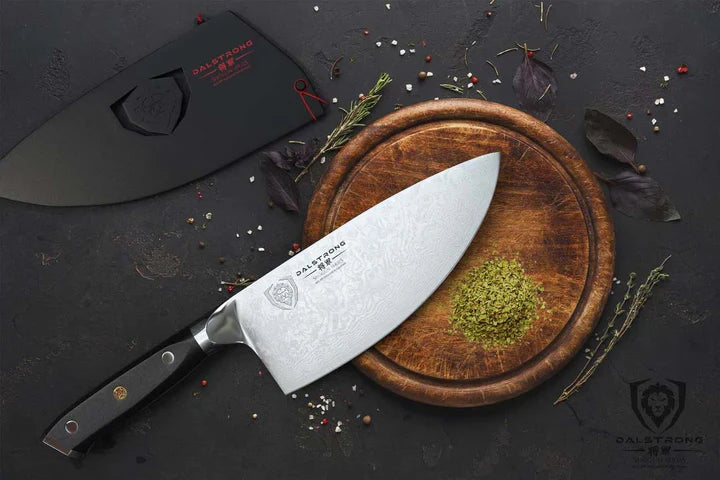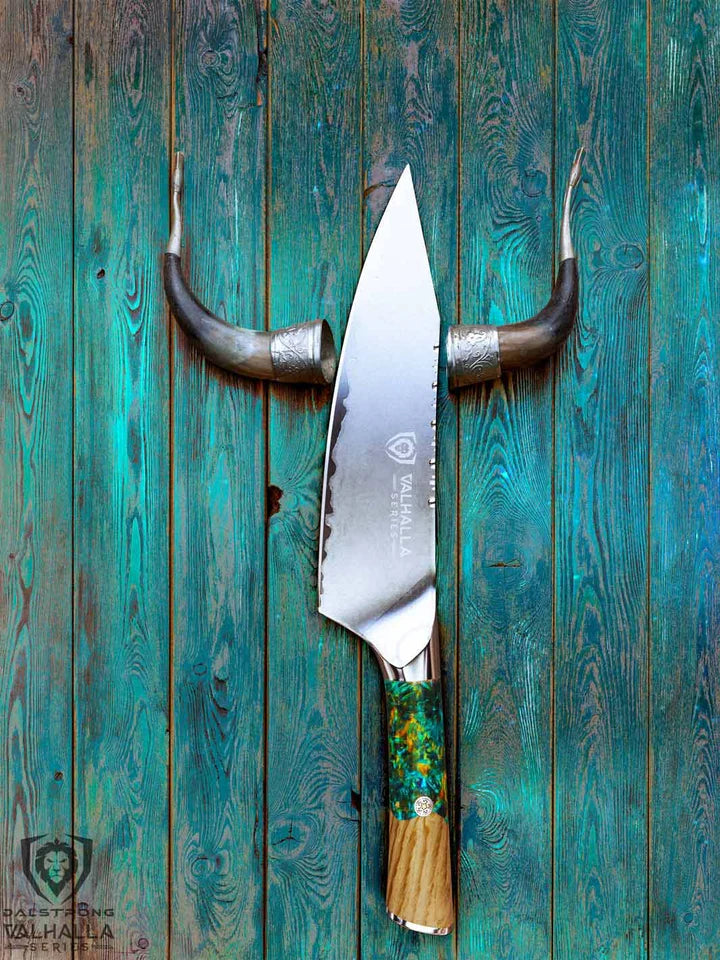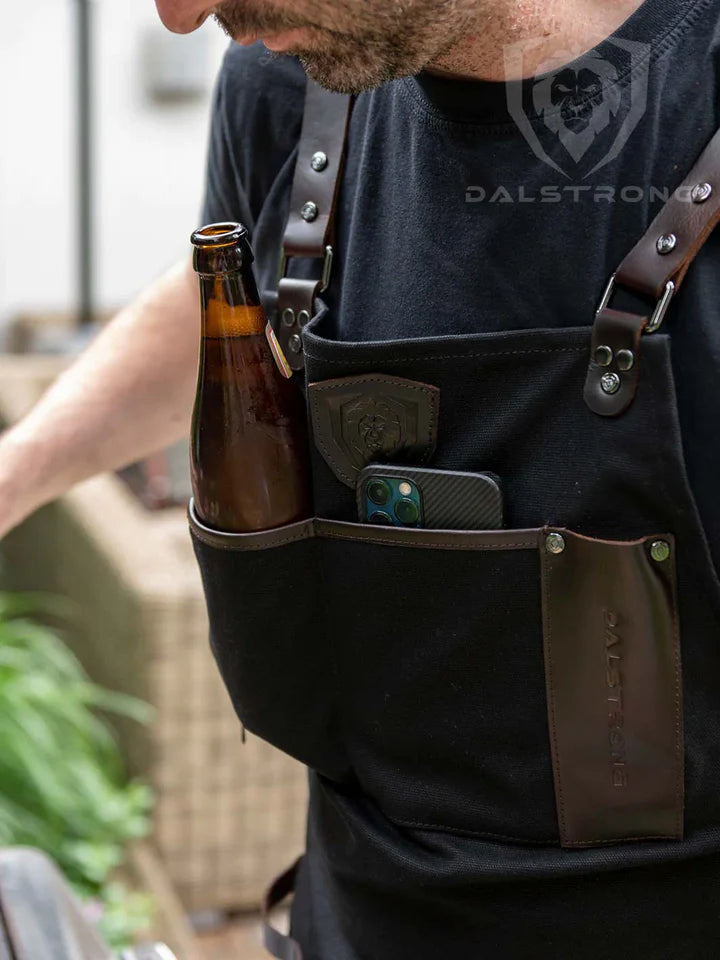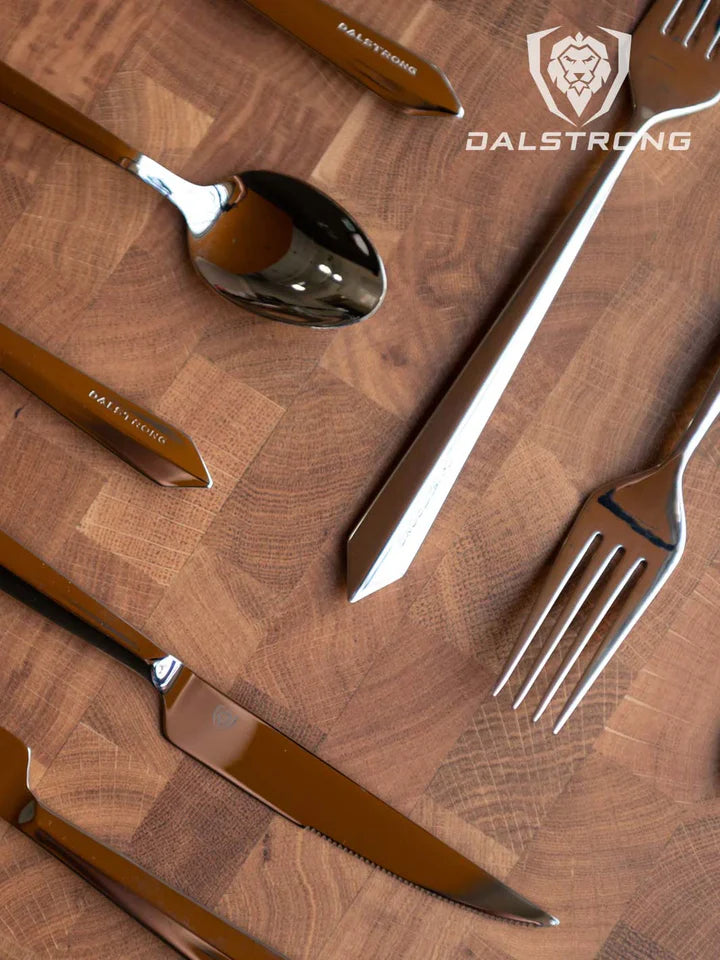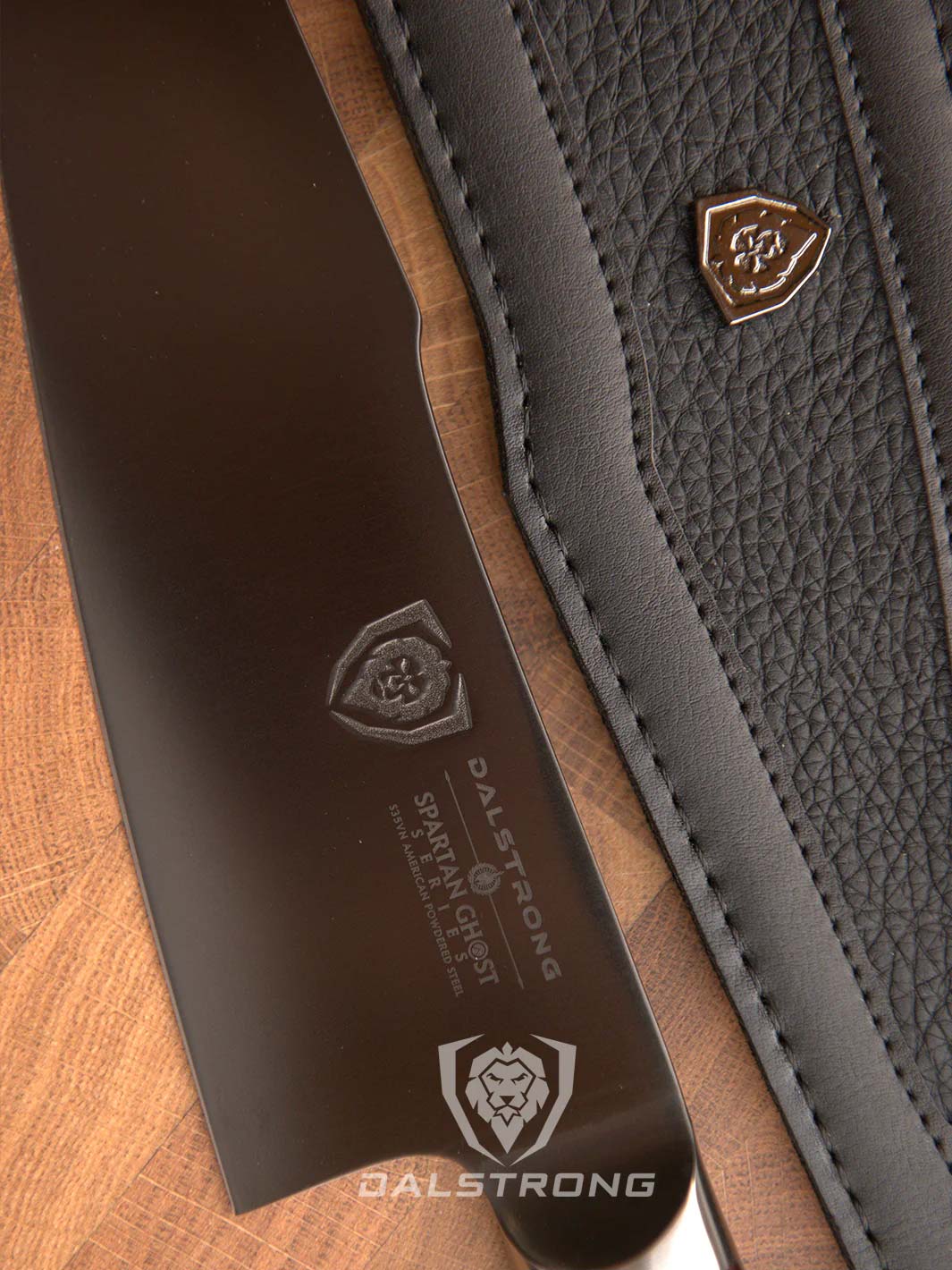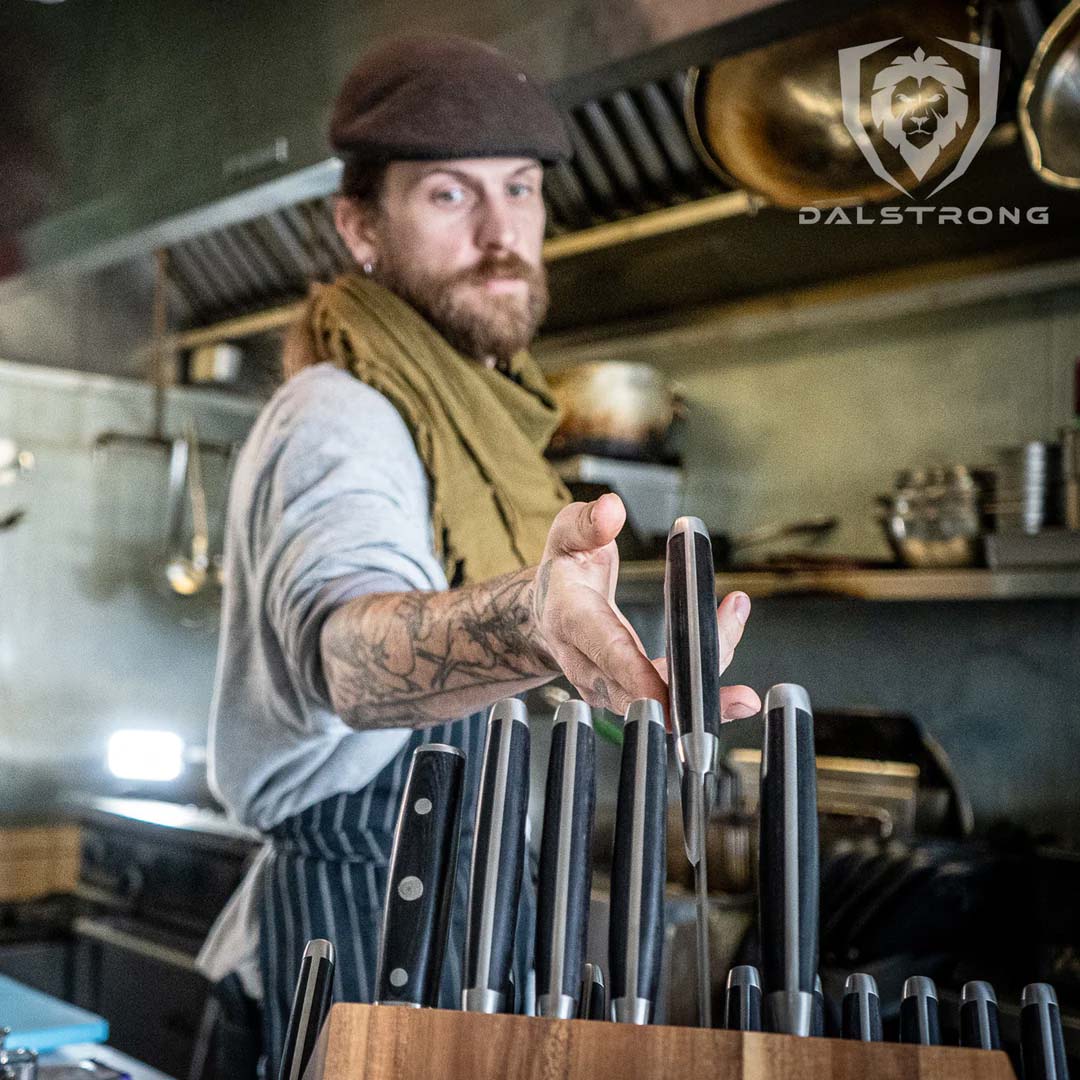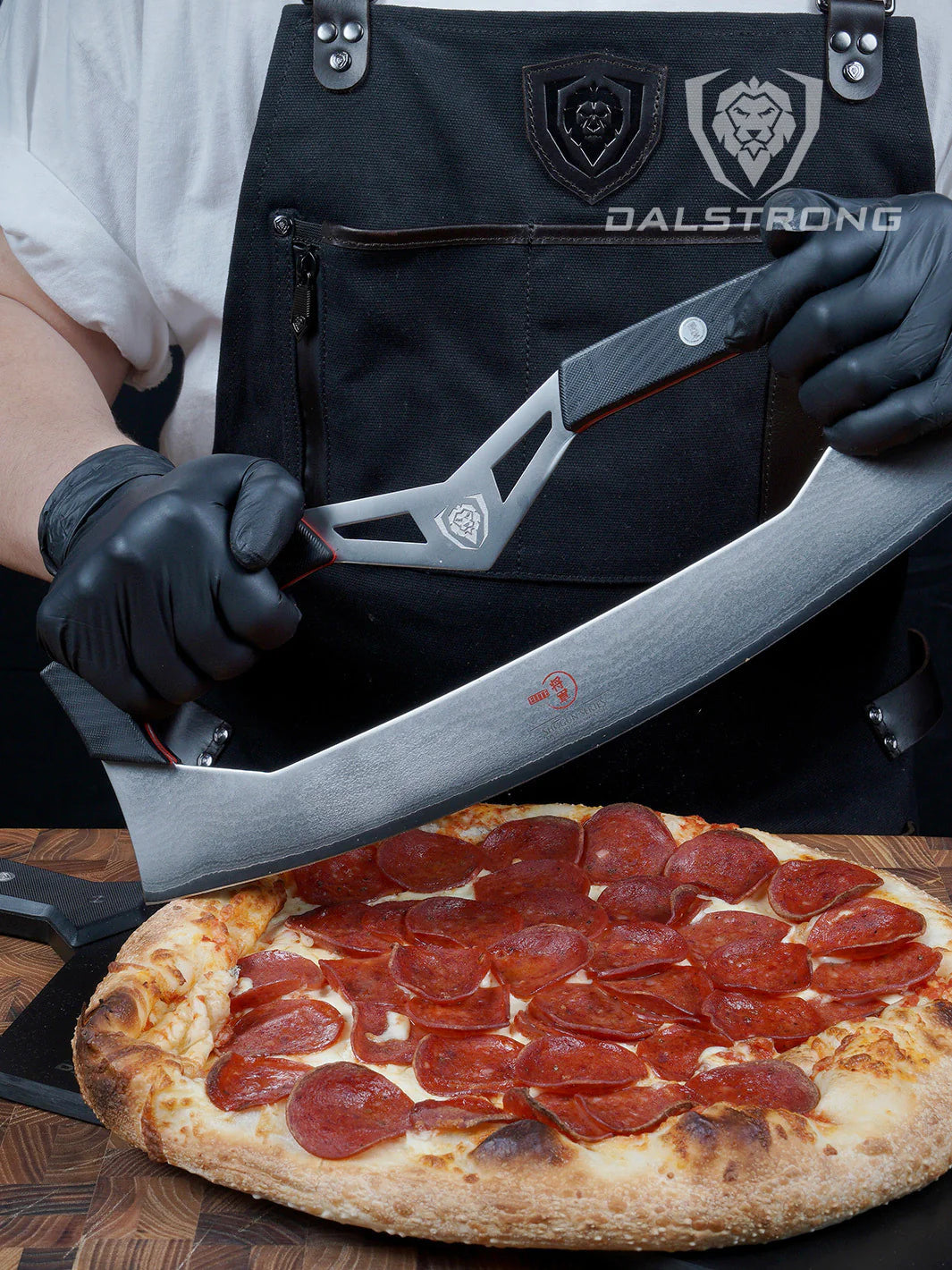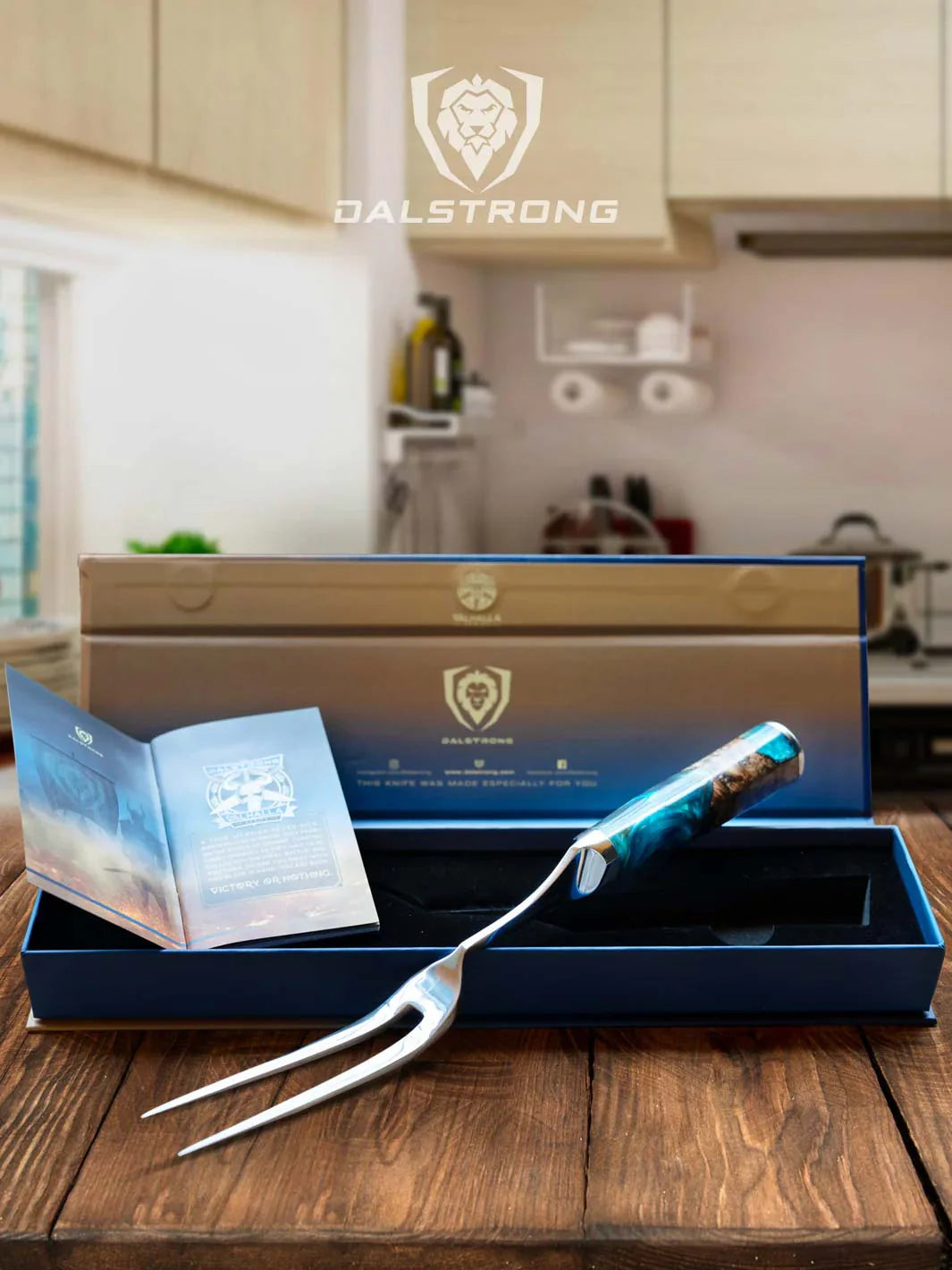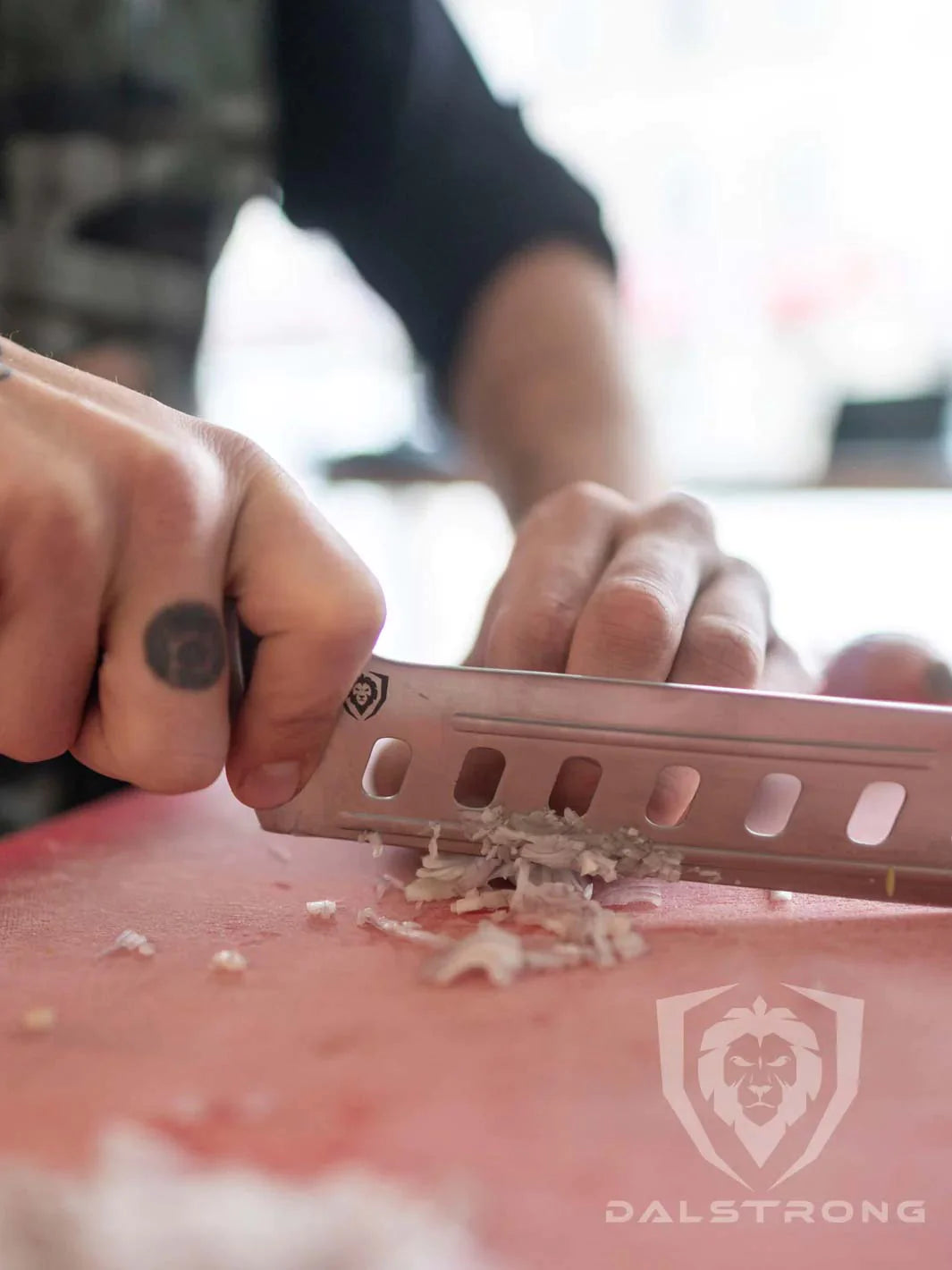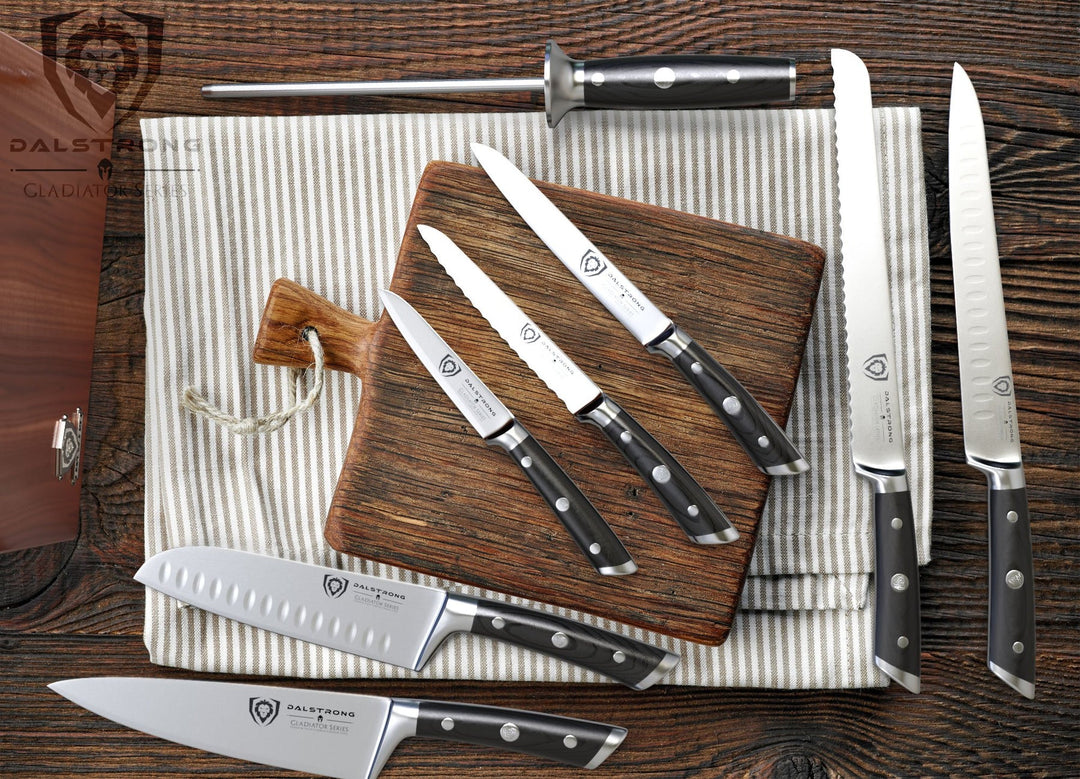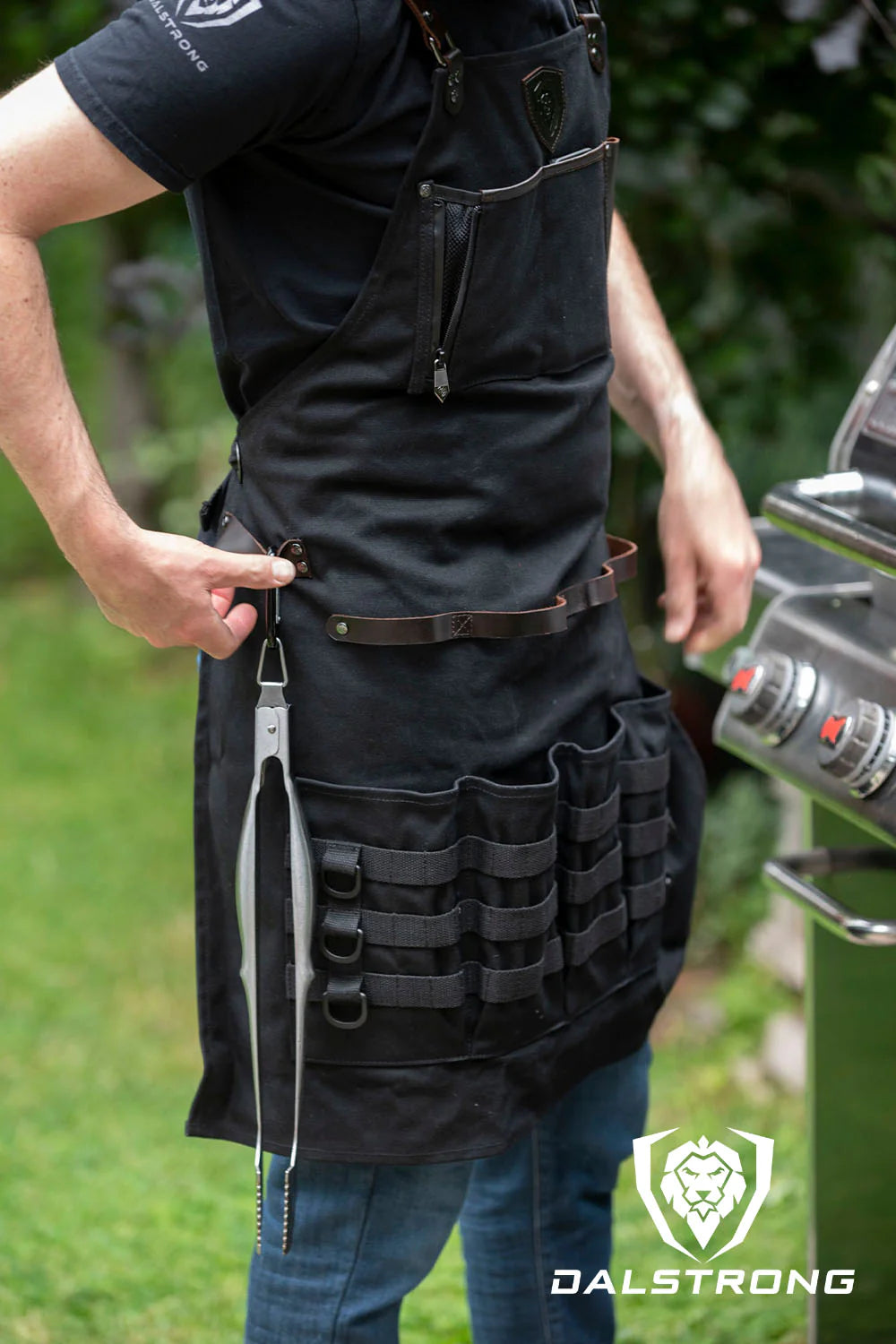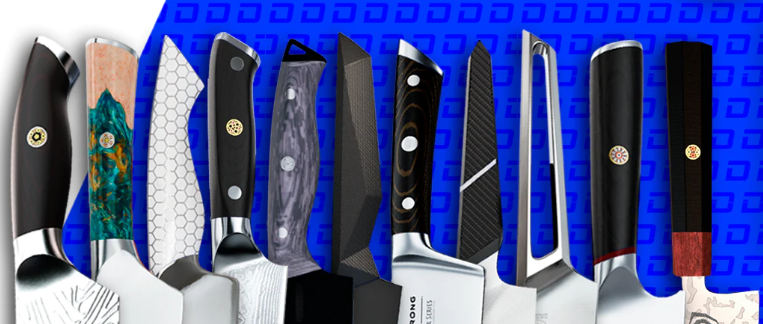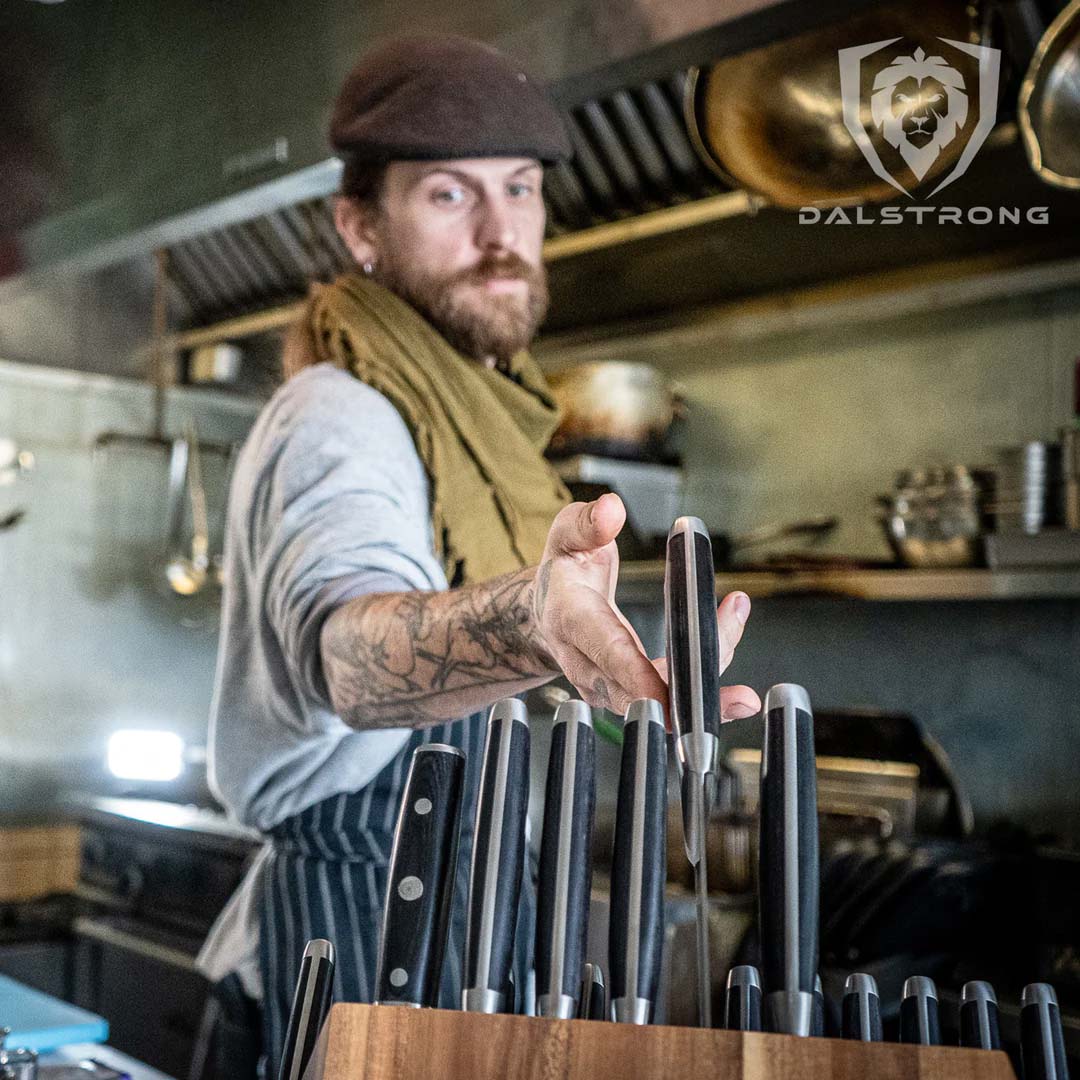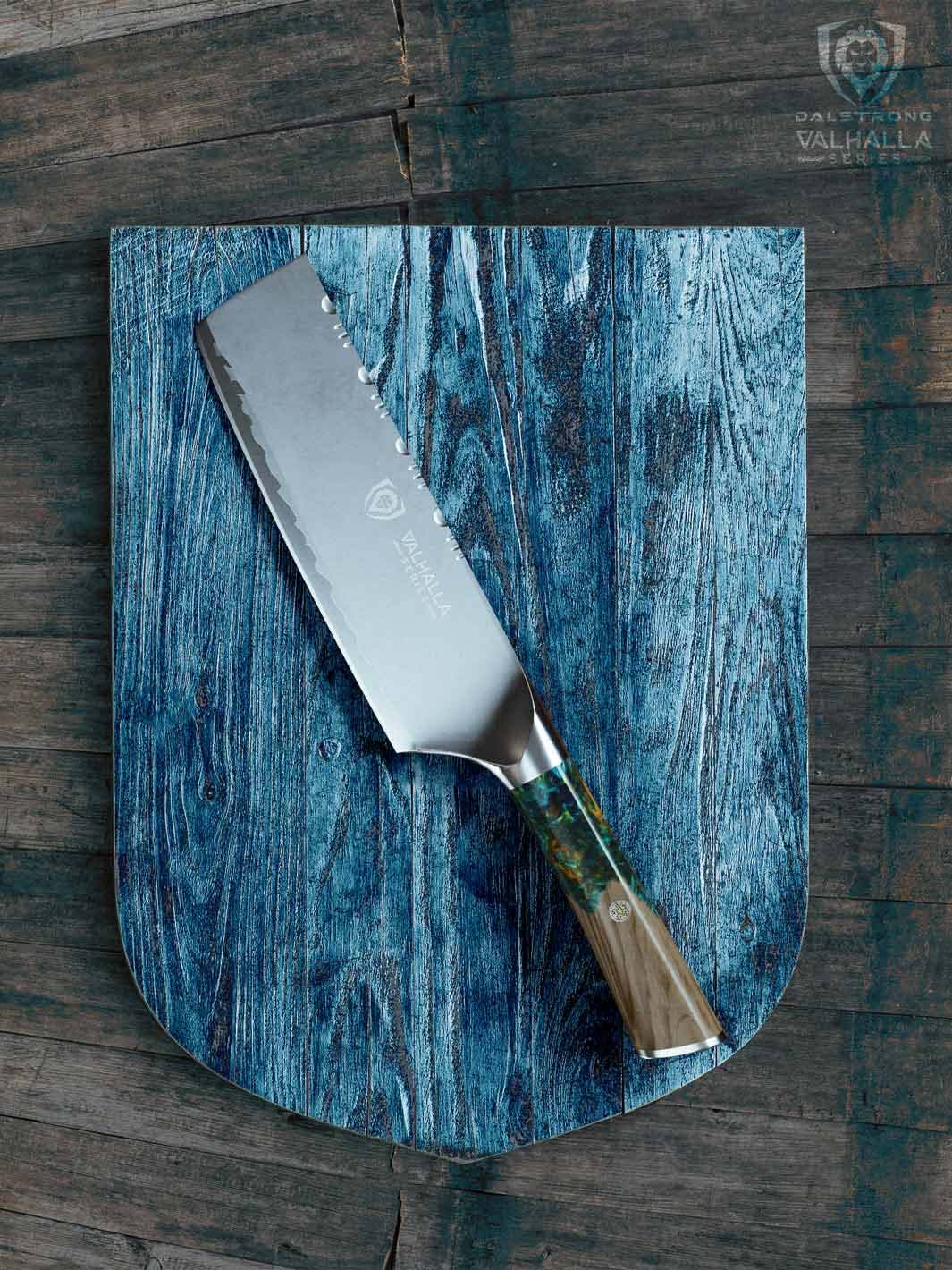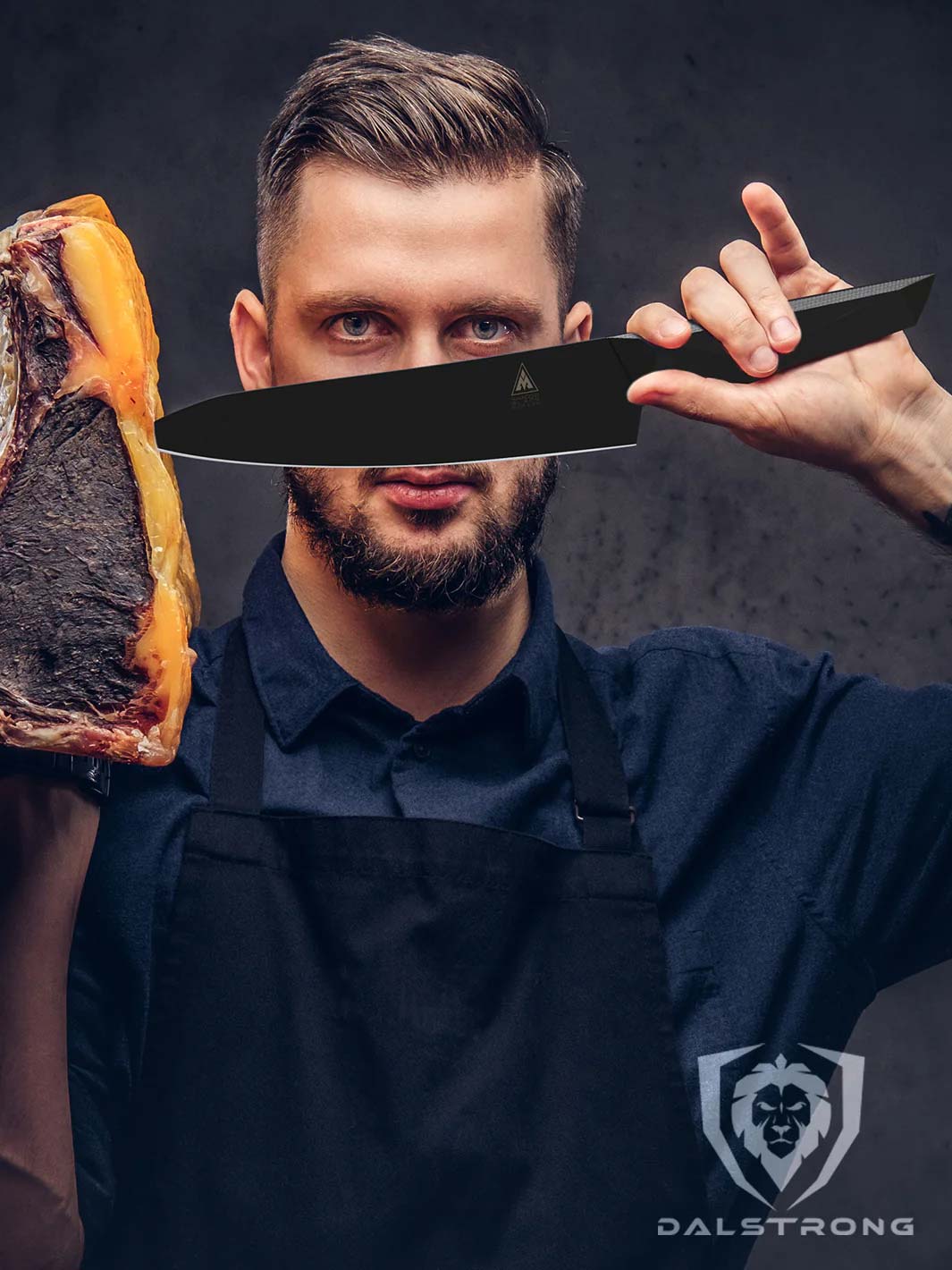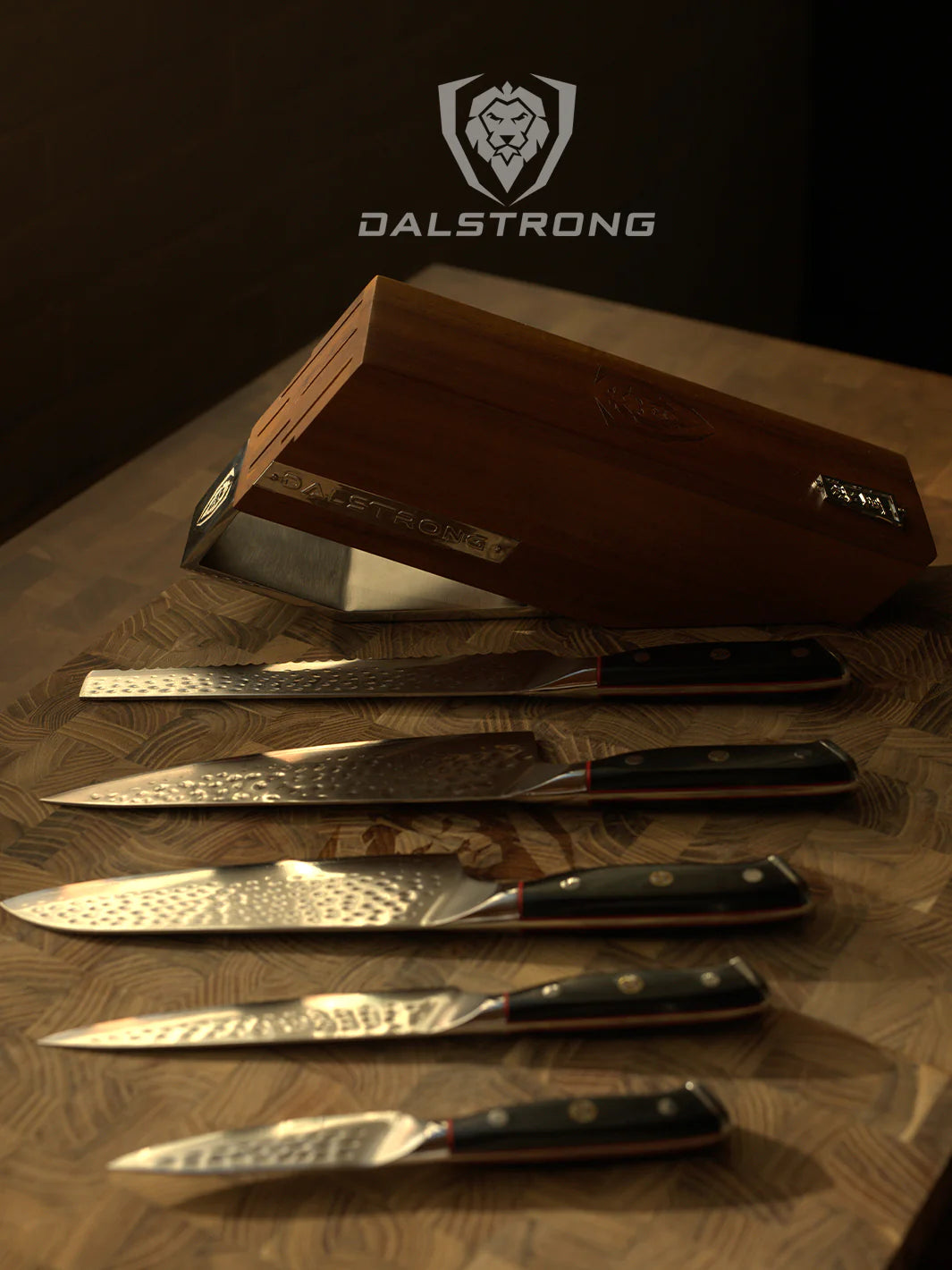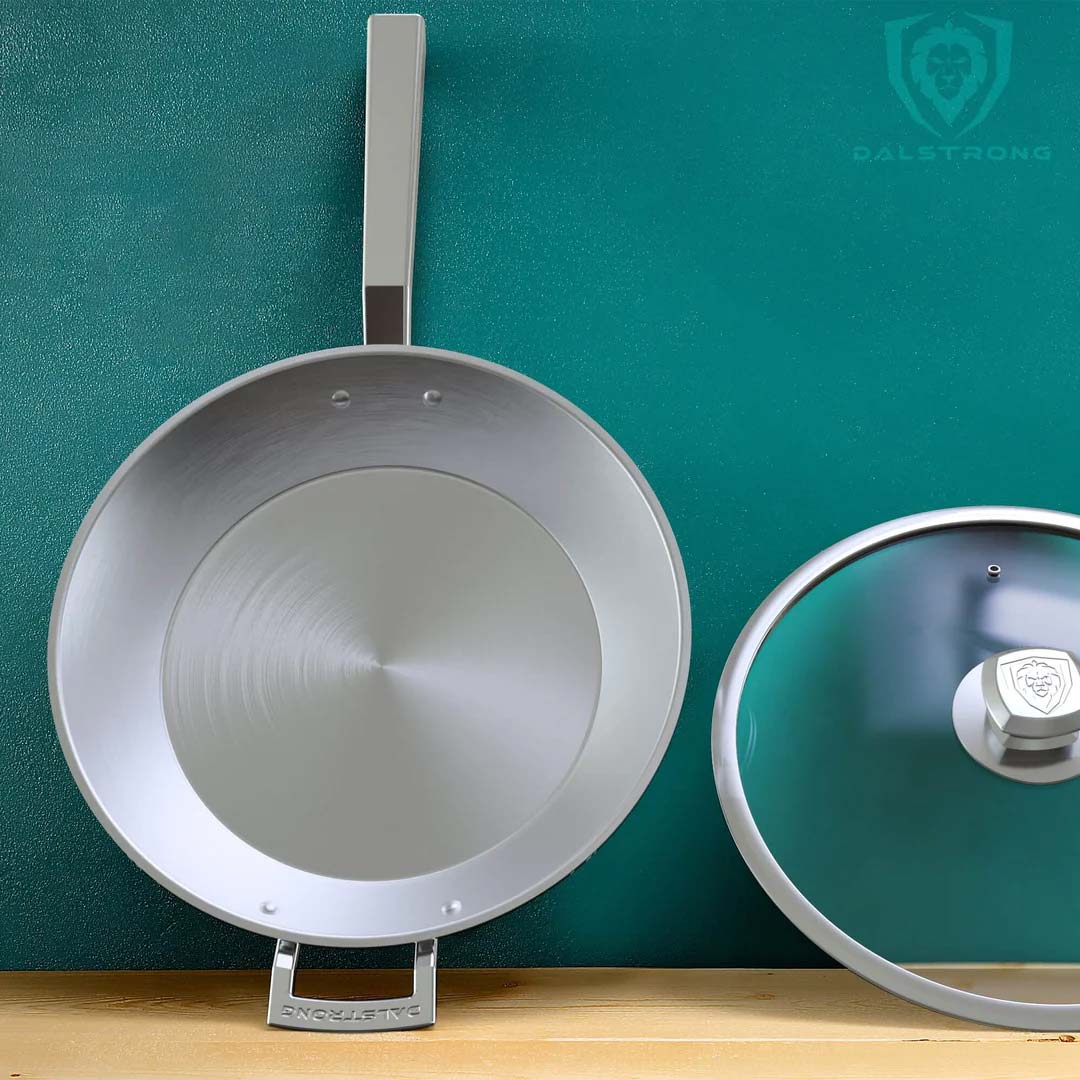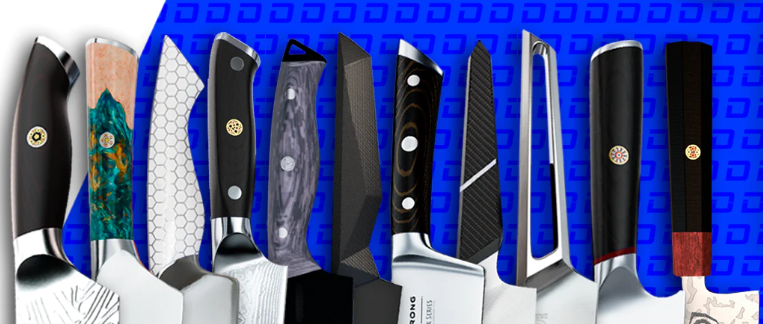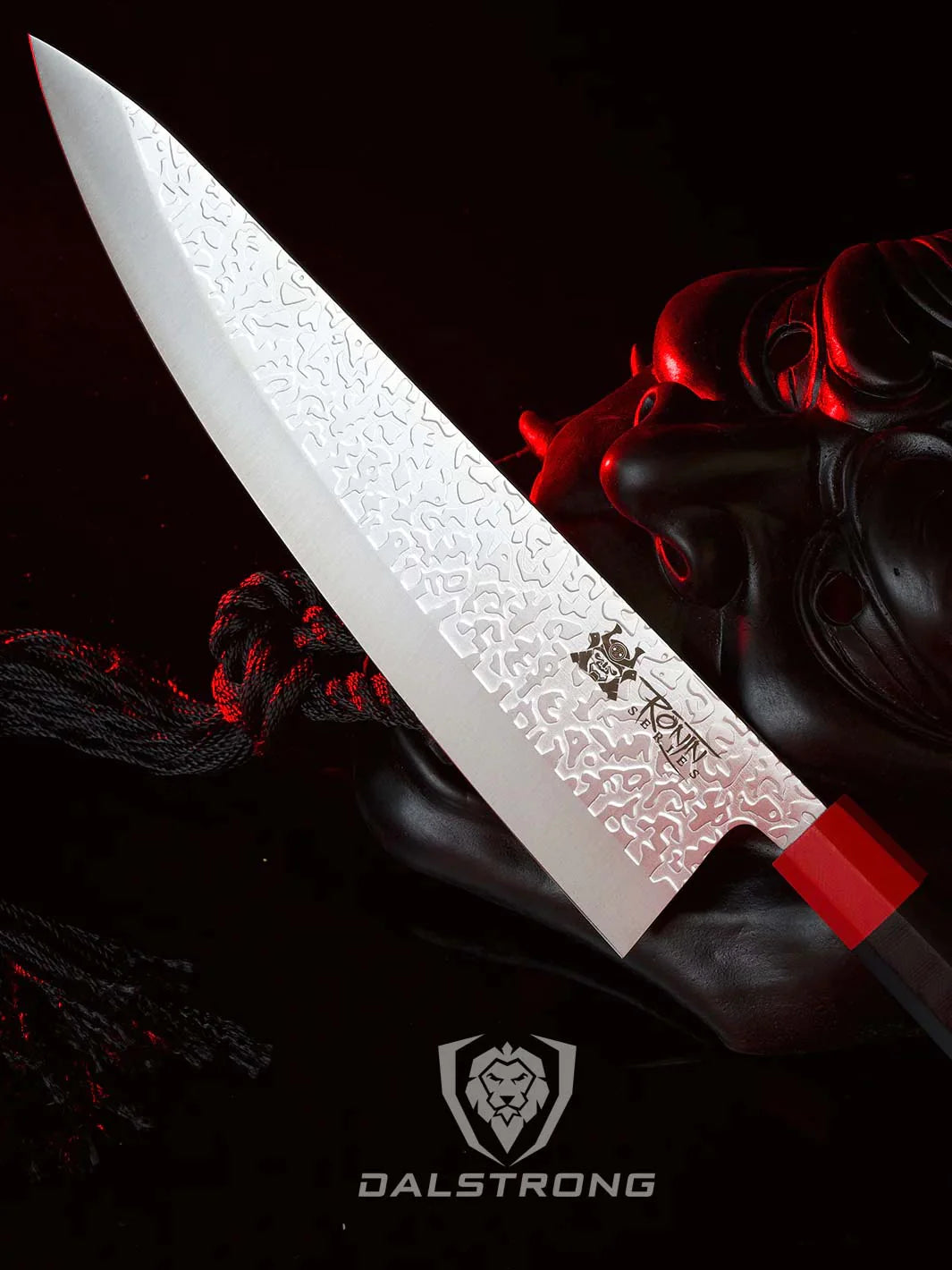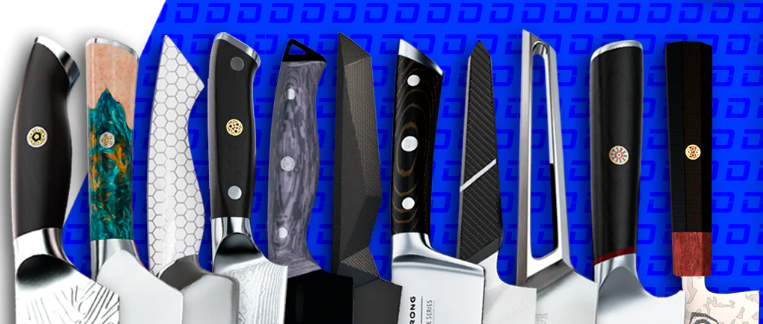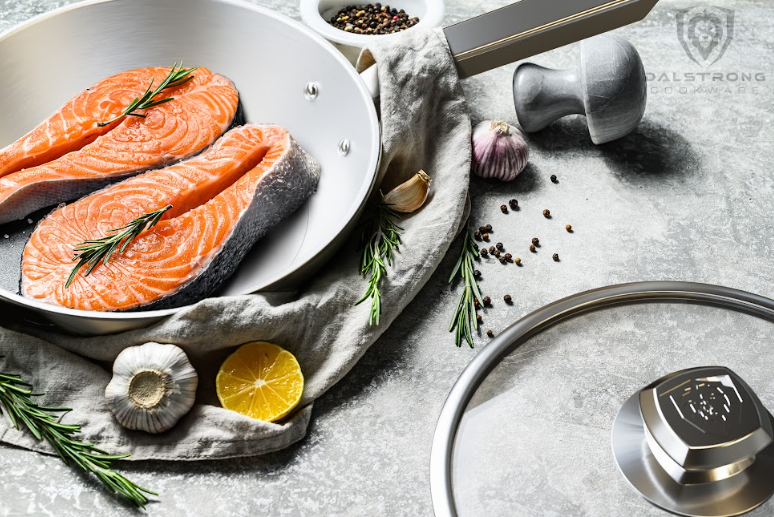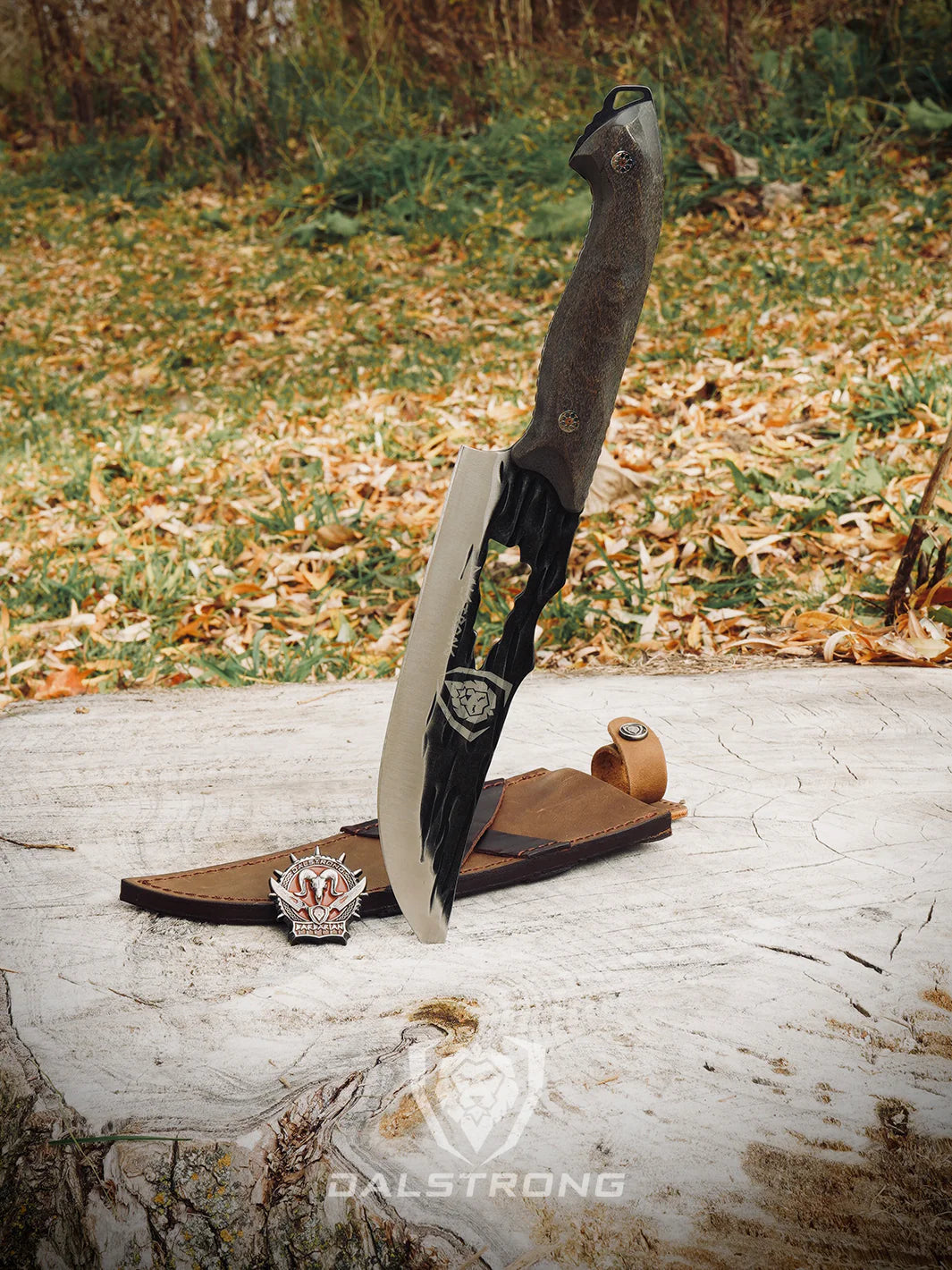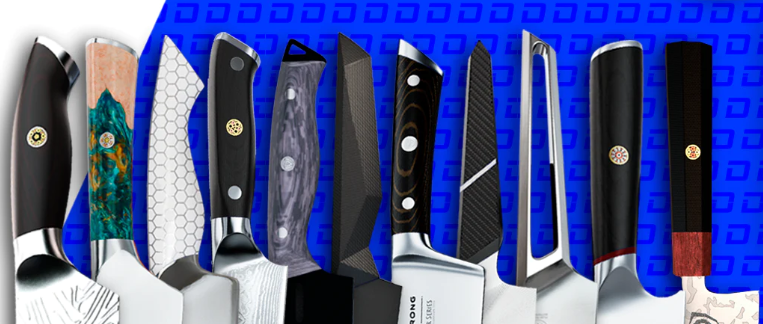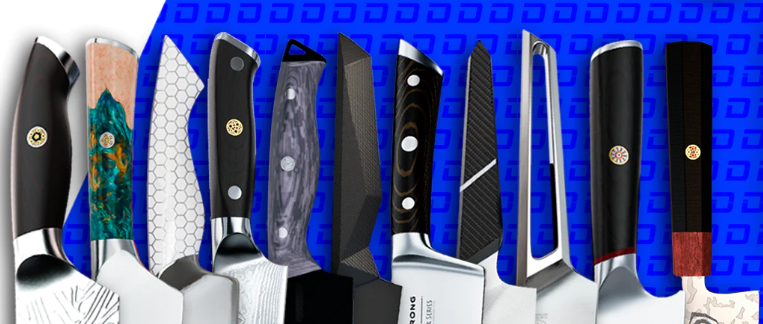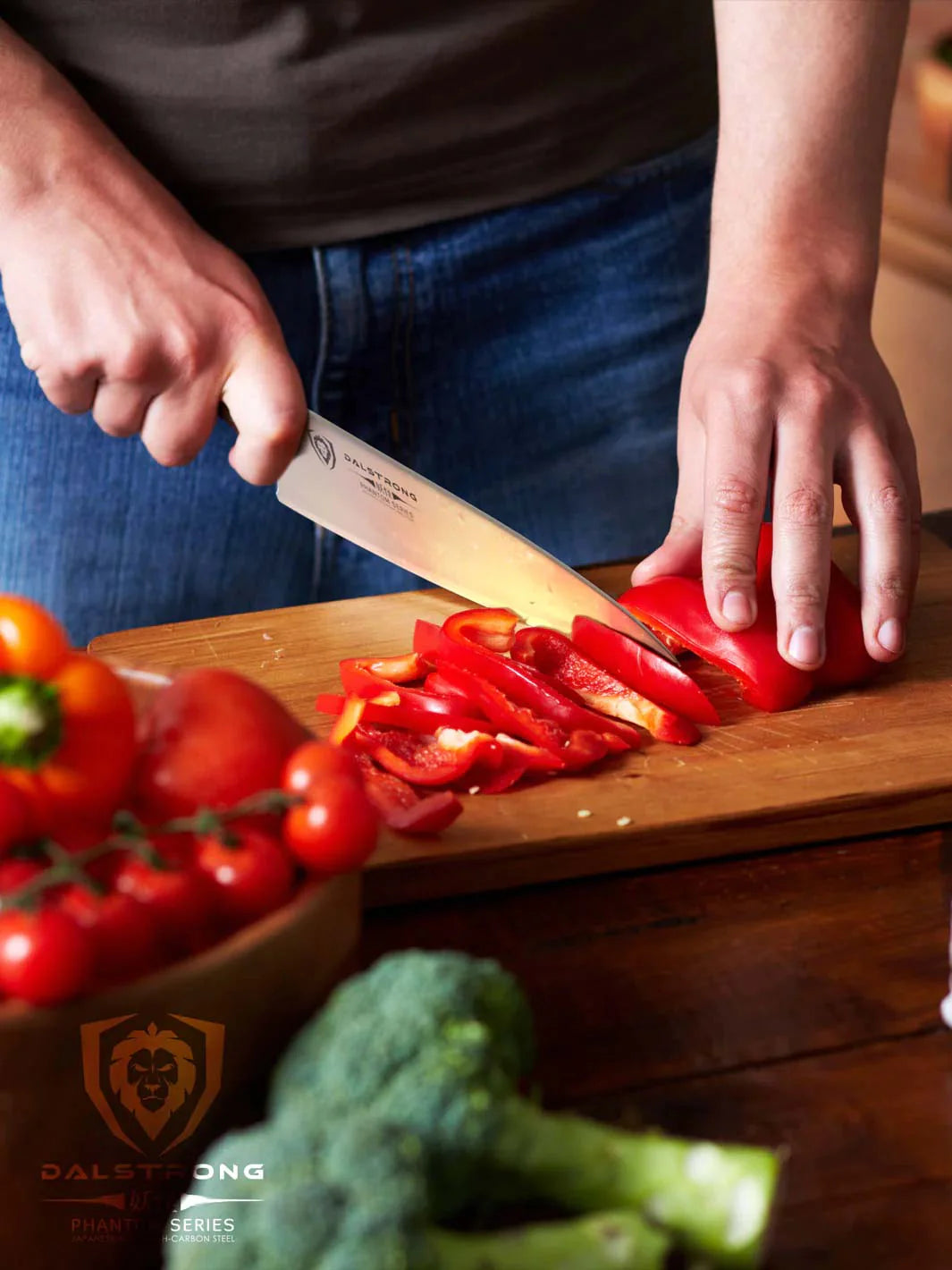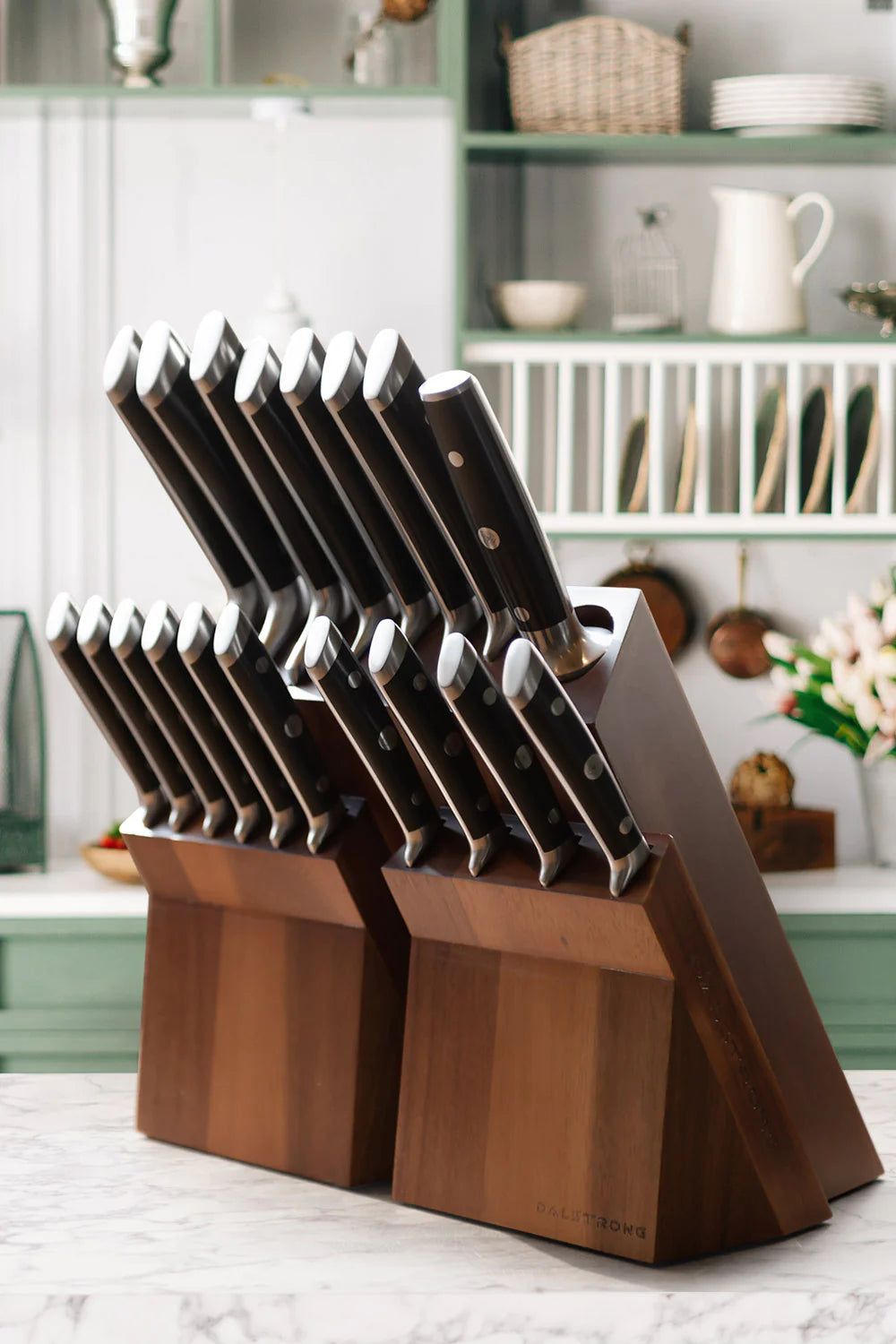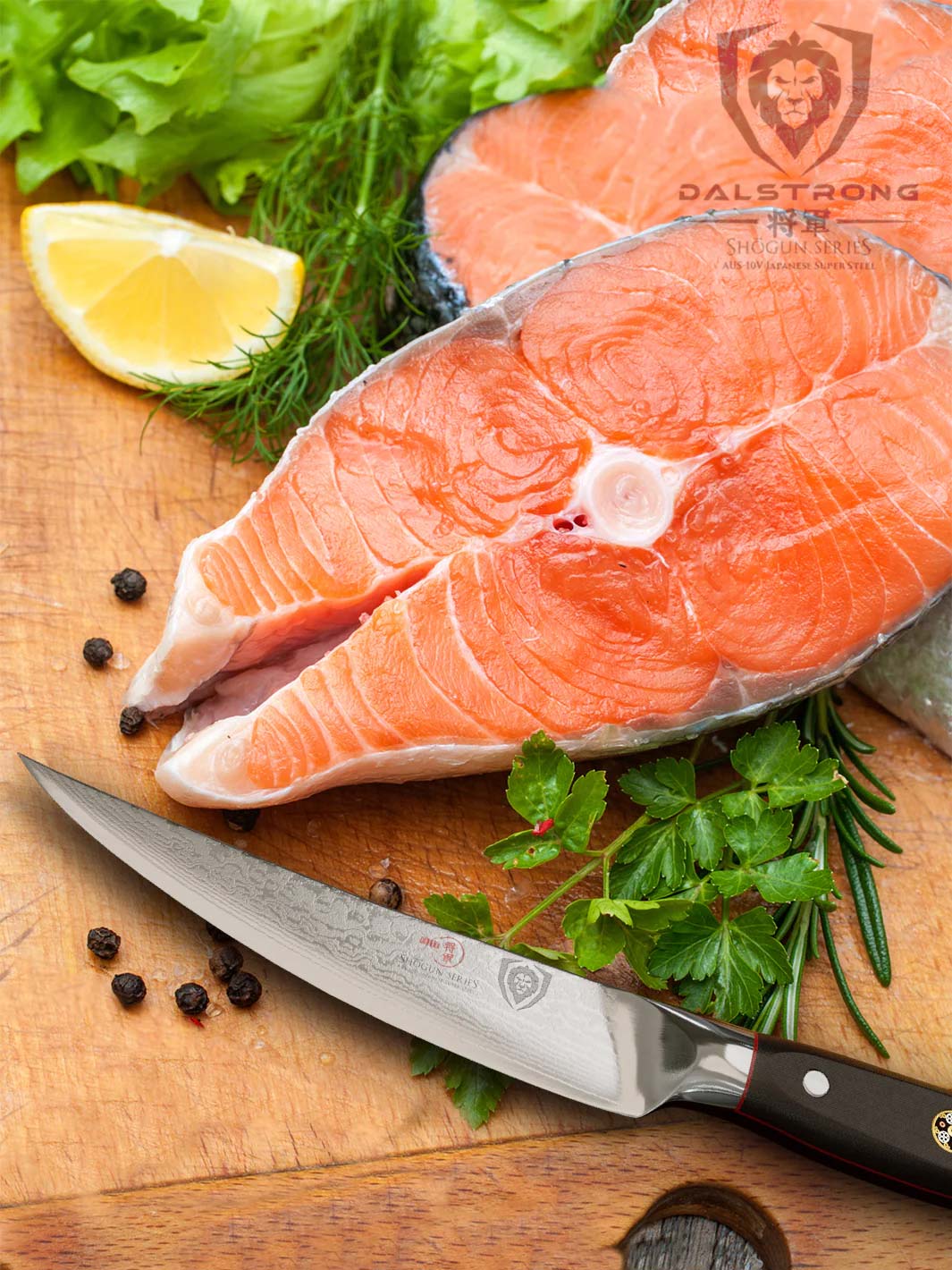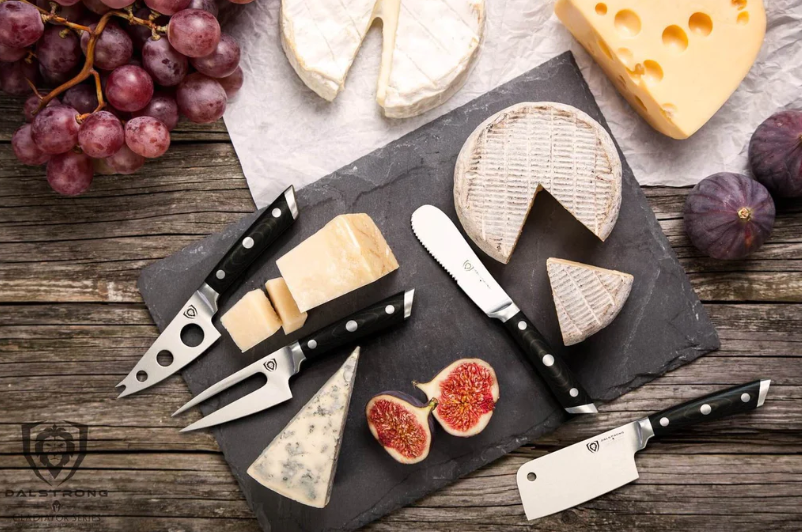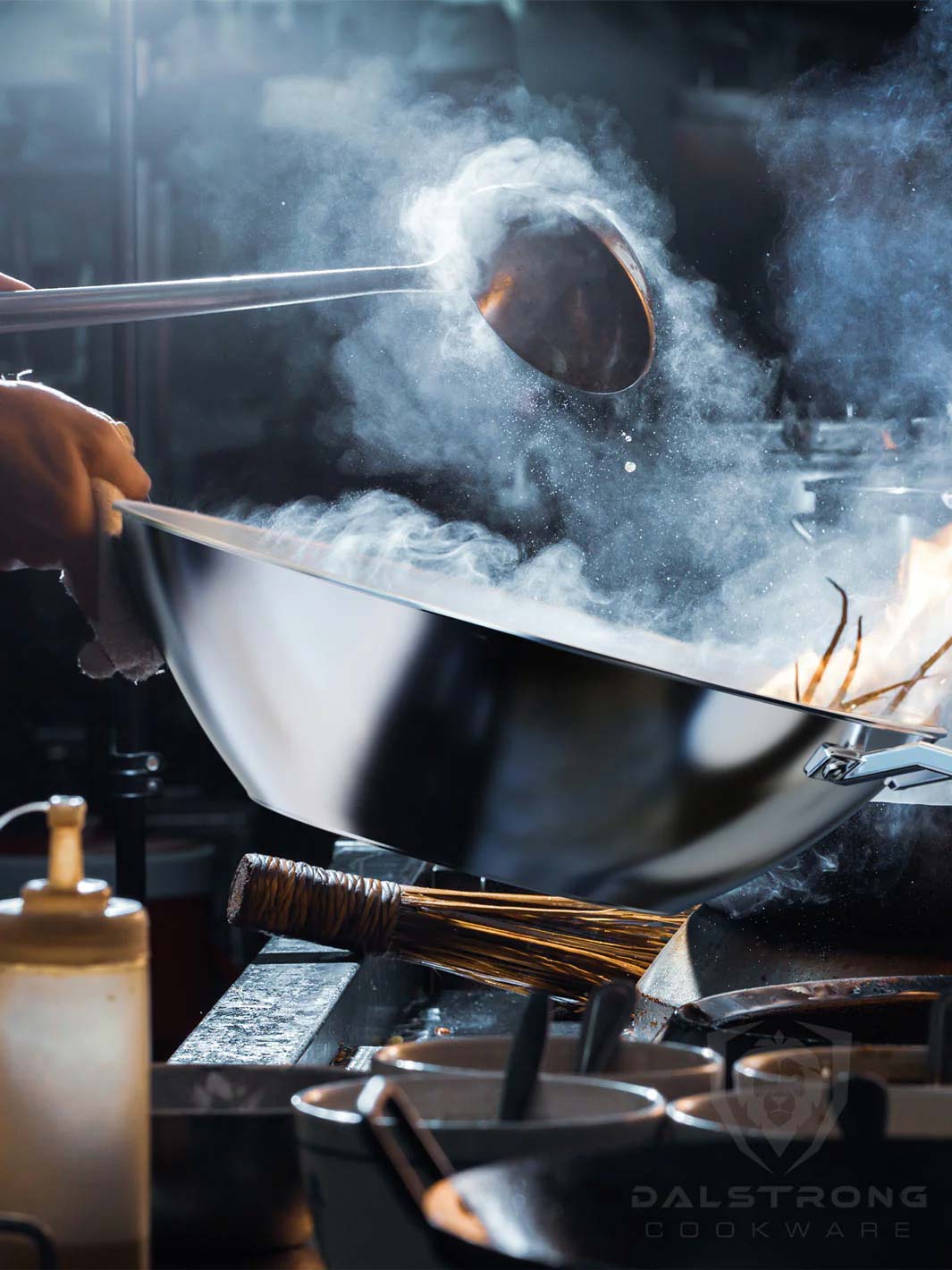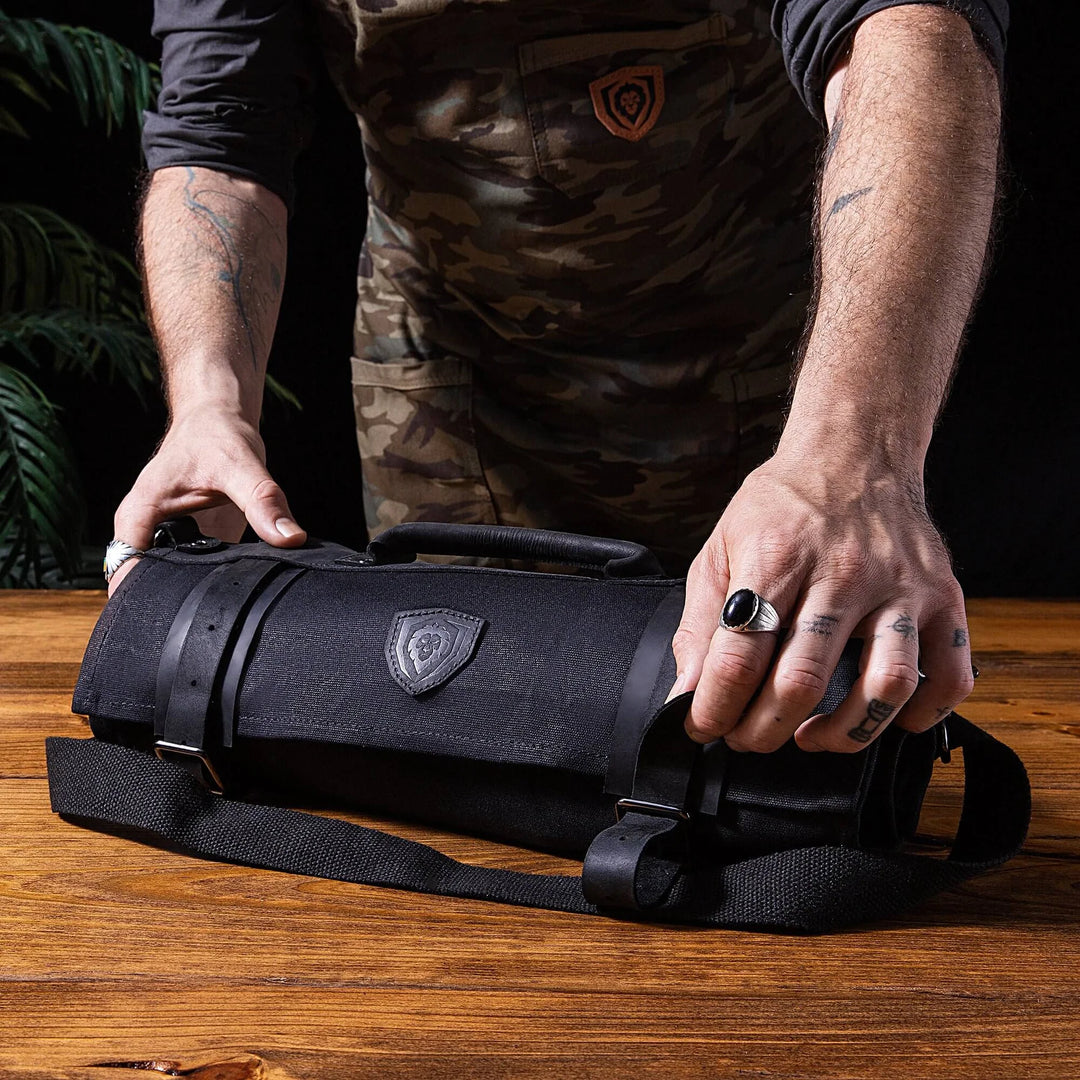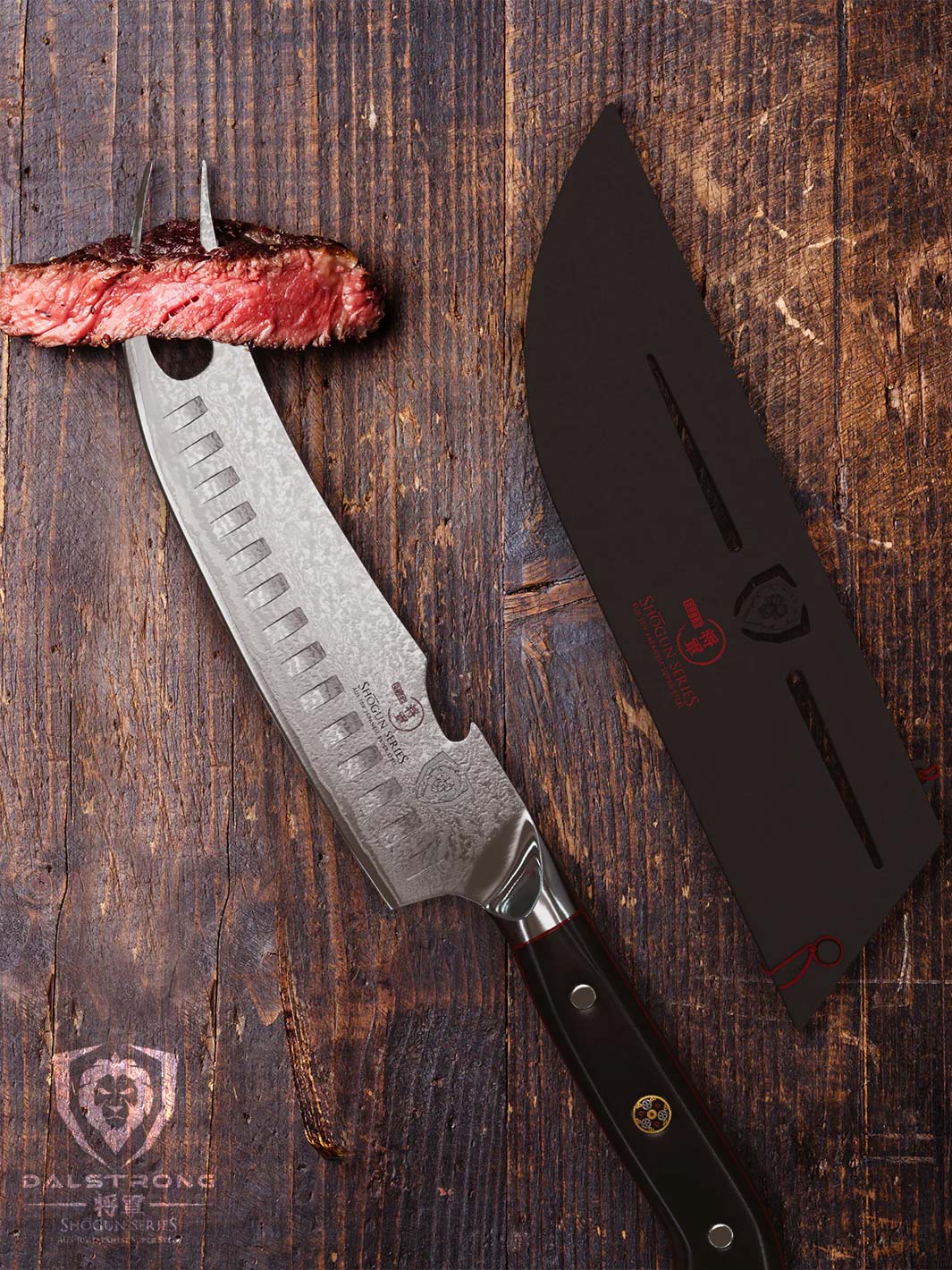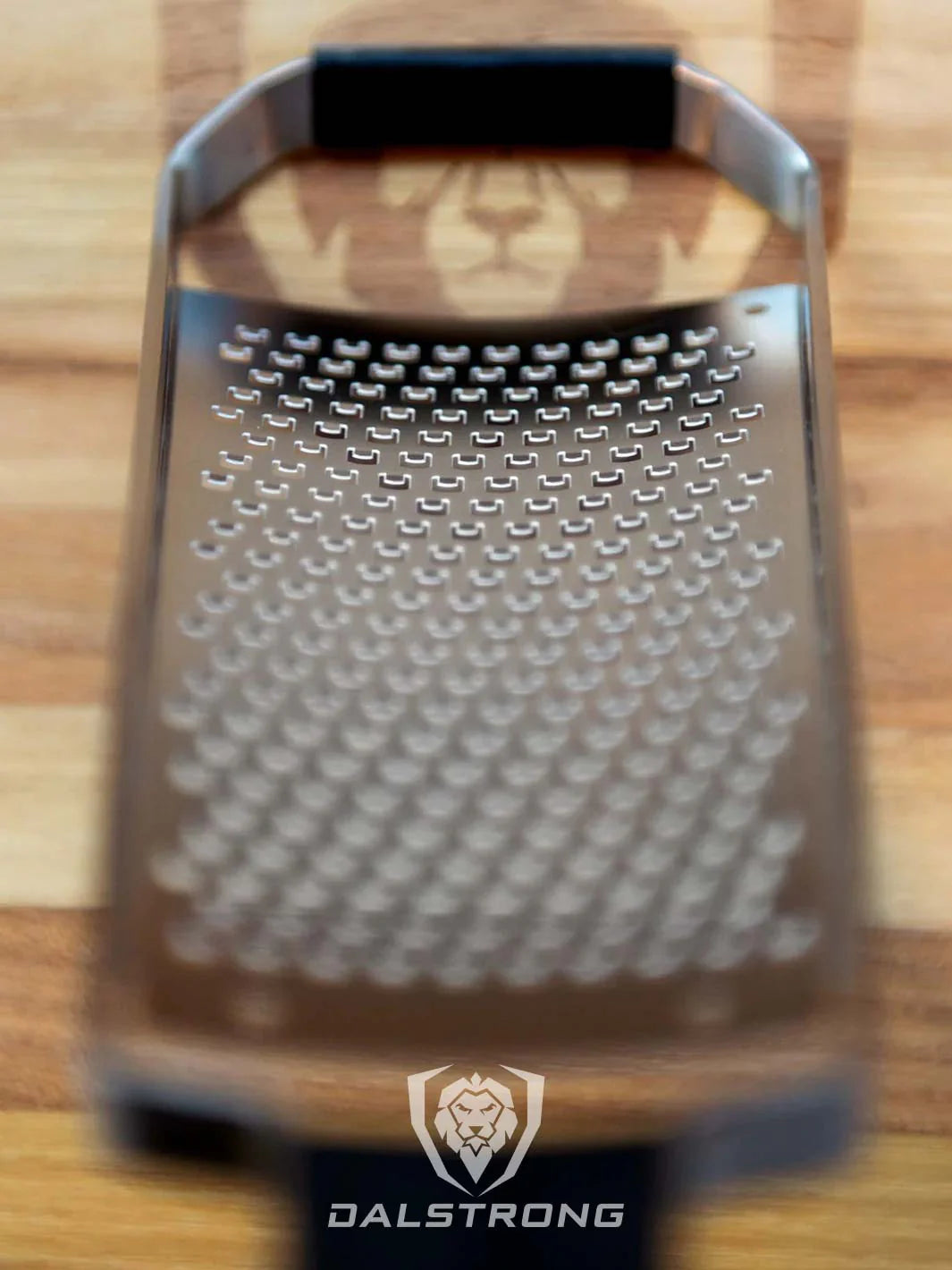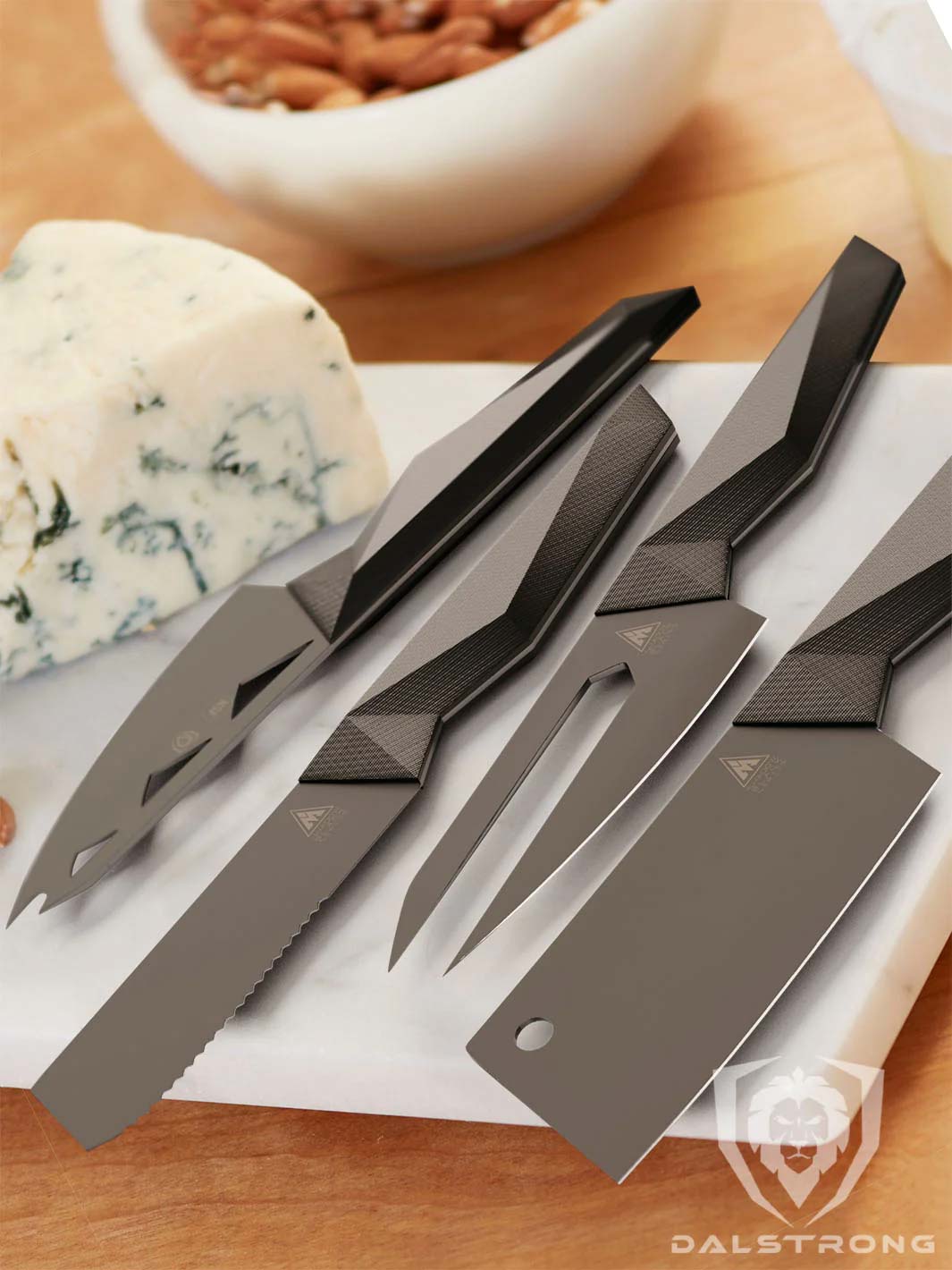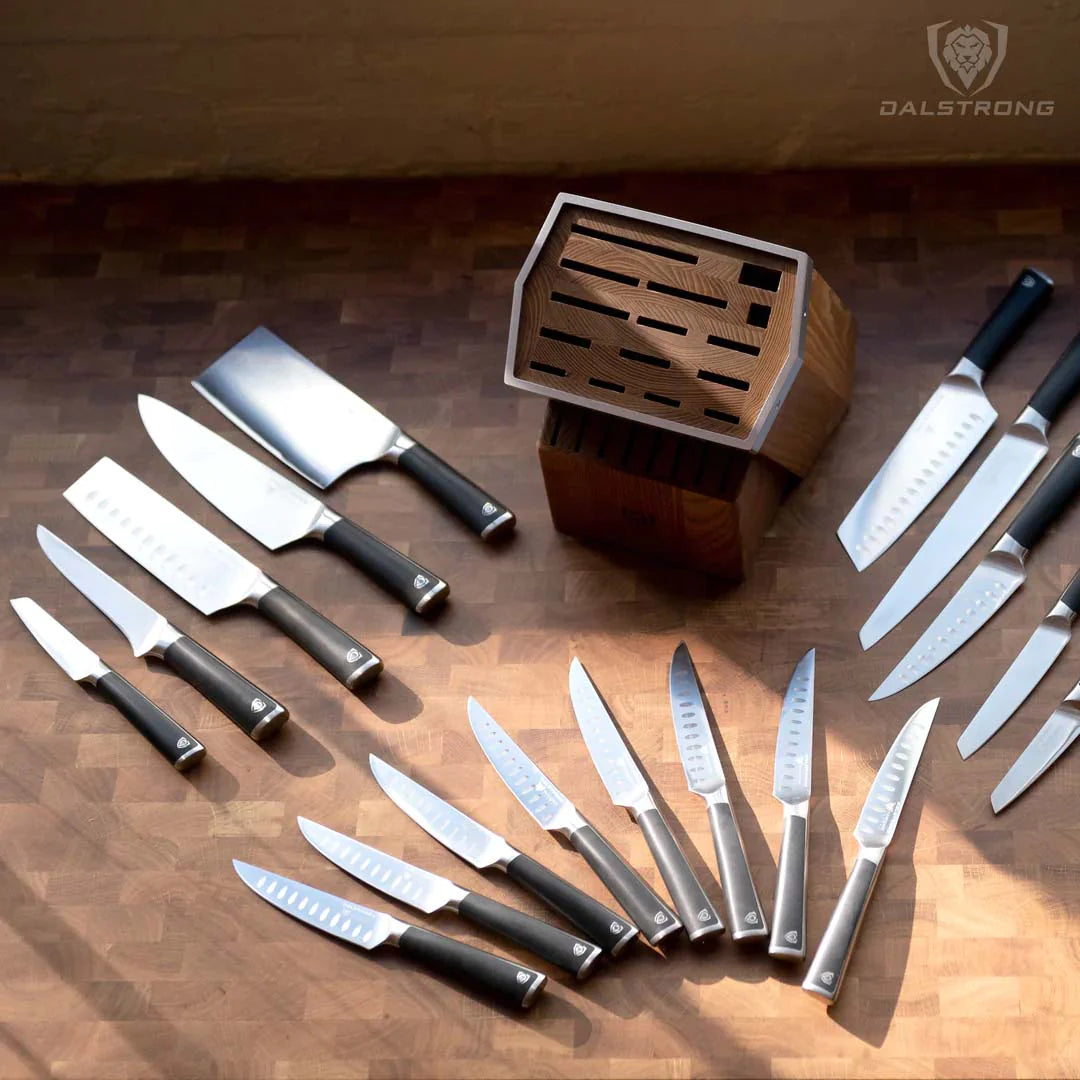Best 2024 Kiritsuke Knives : 5 Ruthlessly Sharp Japanese Knives

Best Kiritsuke Knives
- Kiritsuke Chef's Knife 9.5" | Phantom Series
- Kiritsuke Chef's Knife 8.5" | Shogun Series
- Kiritsuke Chef's Knife 8.5" | Shadow Black Series
- Kiritsuke Knife 8.5" | Gladiator Series
- Kiritsuke Chef's Knife 8.5" | Quantum 1 Series
8.5'' Kiritsuke | Shogun Series | Dalstrong ©
Kiritsuke knives might not yet be staples in all Western restaurants and kitchens, but these Japanese blades are not knives to sleep on. As foods from various cultures, more and more, become a globally shared experience, we also begin borrowing one another’s best prepping methods.
We already know how delectable Japanese food can be. We adore our favorite Ramen House and Sushi spot. In fact, many of us have had friends over to our homes to make, and enjoy, sushi and sashimi together. We already know the dishes; now, it is time for us to learn a bit more about the authentic tools utilized to prepare this cuisine in the proper manner. It is time for us to consider which knives best equip us to diversify our mealtimes and our knife sets.
Japanese knives are known for being ruthlessly sharp and exquisitely well-made. The Kiritsuke knife is no exception. Whether you are a professional chef, someone learning to make Japanese cuisine at home, or an aspiring chef looking for a uniquely styled chef’s knife, the time has come to learn a bit more about Kiritsuke knives. The time has come to start thinking about adding this blade to your knife collection.
In this article you will learn about the Kiritsuke knife. The following is what we will be looking at specifically.
1. What Is A Kiritsuke Knife?
8.5'' Kiritsuke Knife | Quantum 1 Series | Dalstrong ©
The Kiritsuke knife is one of the few multi-use Japanese blades out on the market. This Japanese knife can be used as an anagi (fish slicer) or an usuba (vegetable knife). These sword-like blades traditionally have been single-bevel, and used by professional chefs as a form of status.
Recently however, some double-bevel kiritsuke knife models have made their way onto the scene. These are often called kiritsuke gyutos, and offer the aesthetic appeal of the traditional Kiritsuke, but with the added versatility of a double-beveled edge.
Kiritsuke knives are often crafted out of high carbon or damascus steel. They feature razor sharp edges, which do require regular sharpening. They are statement knives, instantly recognizable by their straight blade with its sword-like tip.
2. What Is A Kiritsuke Knife Used For?
8.5'' Kiritsuke | Shogun Series | Dalstrong ©
The Kiritsuke knife has multiple functions. Traditionally, the knife has been utilized for preparing Japanese cuisine. However, it is a versatile knife, which can do everything that western knives can do, as well. Its long, straight, ruthlessly sharp blade makes it an ideal tool for:
- Dicing vegetables
- Slicing raw fish, when making sushi and sashimi.
- Cutting herbs
- Slicing raw meat
The kiritsuke is a cross between the usuba and the yanagiba. Like the usuba knife, the kiritsuke features a thin steel blade that is expert at chopping vegetables into very thin slices. Like the yanagiba knife, often used for slicing thin slices of raw fish and other boneless protein, the kiritsuke is a precise instrument used to work with food preparation that requires exactness.
The kiritsuke blade features a ruthlessly sharp edge, which one must use with skill. This is why the kiritsuke has often been thought of as a master’s chef’s knife, used primarily in professional kitchens.
Still, with some guidance and practice, any home chef can reap the tremendous benefits of a japanese blade of this quality. With some practice, the kiritsuke will feel just as comfortable in your hand as your trusty western style chef knife does.
Once you decide to add a kiritsuke blade to your kitchen arsenal, you will need to know how to properly utilize it. What follows are some steps to do just that.
3. How to Use A Kiritsuke
8.5 Kiritsuke | Gladiator Series | Dalstrong ©
Because of the sharpness of these blades, begin with caution and take all of the normal safety measures you would with any chef’s knife.
Then follow the following steps:
- Use the pinch grip: Many claim that this is the best grip for operating a kiritsuke blade. The pinch grip refers to a way of handling the knife, where you hold the handle in your hand and then place your thumb and index finger on the base or bolster. This grip will add some control to your slicing.
- Use the sword-like tip to go down on your Dalstrong cutting board to make clean, thin slices of what you are cutting.
- Up and down motion. This is the ideal motion for chopping your vegetables.
- Less rocking than other blades: Instead of rocking, pull the blade up toward yourself and then push it down and away from yourself.
Of course these suggestions depend on your personal comfort and what specific tasks you need to accomplish with the knife. It also will depend on whether your Kiritsuke knife is single or double beveled, among other factors.
Practice makes perfect. So, take that Kiritsuke blade out of your knife roll, put on your stylish Dalstrong apron and get to slicing, chopping and cutting. With time, You will find your comfort zone. And before you know it, you will be slicing like a professional chef.
Don’t forget to keep your edge sharp. If the blade begins to dull, make sure to give it a sharpening.
And remember to always use high quality, durable knives from reputable knife-makers.
Here are our suggestions for five exceptional blades.
4. Our 5 Kiritsuke Knife Recommendations
1. Kiritsuke Chef's Knife 9.5" | Phantom Series | Dalstrong ©
This kiritsuke chef’s knife has a blade length of 9.5” and a straight edge. Its razor sharp steel blade is versatile and effective. Turn to this kiritsuke knife when slicing fish or chopping vegetables. It will make a gorgeous addition to any chef’s kitchen arsenal. It features a traditional D-shaped Japanese handle that will fit snugly into your hand. This Phantom Series blade marries functionality and style. It is extremely durable to boot.
Pros:
- Razor sharp blade features a Rockwell hardness of 58 and excellent edge retention
- Stainless steel hand-polished end cap adds counter balance and distinction
- Cleans easily for low maintenance
- Full tang for incredible robustness and quality
Cons:
- Some may prefer their kiritsuke knives to be smaller, possibly in the 8” range
- Might trade extra power for some of the maneuverability of the shorter knives
2. Kiritsuke Chef's Knife 8.5" | Shogun Series | Dalstrong ©
This double bevel knife is a workhorse in the kitchen. Its high carbon stainless steel blade is ruthlessly sharp, and it features a straight, sword-like blade shape. If sashimi or sushi is on the menu, this Shogun Series kitchen knife will slice precise and delectable pieces of fish. It will also double as your vegetable knife. In fact, you can pull this kiritsuke out of your knife bag for any chef knife task. It features an ergonomic handle that will feel right at home in your hand. And it is exceptionally durable.
Pros:
- 62+ Rockwell hardness for unrivaled performance and incredible edge retention.
- Precisely tapered blade minimizes surface resistance for buttery smooth cut through.
- Stainless steel end cap (second bolster) adds perfect counterbalance
- Blade’s spine is hand polished to a smooth finish for enhanced pinch grip comfort
Cons:
- A knife of this quality is not cheap. It might be over some budgets.
- It might have more high-end features than a novice chef is looking for in a kiritsuke blade.
3. Kiritsuke Chef's Knife 8.5" | Shadow Black Series | Dalstrong ©
This sleek and aggressive kiritsuke knife features a Titanium Nitride non-reflective coating, which offers it its menacing elegance. The high carbon steel blade is razor sharp and up to any task required of a Kiritsuke knife.
The handle geometry is uniquely designed to tuck snuggly into your palm, giving you a firm grasp regardless of the grip style you use. This kitchen knife is equal parts sophisticated, functional and versatile. Pull it out of your knife bag whenever you want to make a statement, while cutting and dicing veggies or slicing fish or meat.
Pros:
- Tall blade height gives knuckle clearance to assist with food preparation and chopping activity
- Cleans easily for low maintenance
- Fiber-resin military grade G10 handle is nearly impervious to heat, cold and moisture
- Precision forged, ultra sharp, wear-resistant, single-piece blade, made of high carbon steel at a 58 Rockwell hardness
Cons:
- Sleek, black aesthetic might not fit everyone’s personal style
- Does not come with all of the bells and whistles of the Shogun model
4. Kiritsuke Knife 8.5" | Gladiator Series | NSF Certified | Dalstrong ©
This double bevel kiritsuke knife is a push cut and slicing master. This Gladiator Kiritsuke knife blends the Japanese Yanagiba (fish slicer) with a Usuba (vegetable knife) making it a versatile alternative to a chef’s knife.
No need to question its sharpness. This kitchen knife features a high carbon steel blade with a Rockwell hardness of 56. And its military grade G10 handle offers comfort and durability. This blade will require minimal sharpening to do the job right.
Pros:
- Tapered design for hardness and flexibility
- The edge is painstakingly hand sharpened to 16-18° per side, maintaining the perfect balance between blade sharpness and maximum resilience
- Full tang for incredible robustness and quality
- Stainless steel second bolster (end cap) adds counter balance and distinction
Cons:
- Those looking for a master chef quality sushi blade might prefer a single bevel knife
- This knife might be more traditional looking than other models, if your style leans toward the more unique
5. Kiritsuke Chef's Knife 8.5" | Quantum 1 Series | Dalstrong ©
Astonishingly sharp, this Quantum 1 Series Kiritsuke high carbon steel blade is the future. With a Rockwell hardness of 63, this blade has been masterfully crafted to handle any of your slicing, chopping and cutting needs, while remaining extremely durable. You need a vegetable knife, no problem.
You need to slice fine cuts of sushi or sashimi, done. A dragon skin G 10 carbon fibre handle completes the knife and offers you the comfort, control, and style you are seeking. You will feel sophisticated and smart when you cut, slice and dice with this Kiritsuke chef knife.
Pros:
- Uniquely designed with our “Nova Prime” blade pattern that reduces drag and increases efficiency.
- Full tang for incredible robustness & quality.
- Ergonomic handle shape for maximum comfort, grip and maneuverability
- Cleans easily for low maintenance
Cons:
- This sophisticated blade might be over some budgets
- Unique handle might not meet everyone’s personal style
5. Frequently Asked Questions
8.5'' Kiritsuke | Shadow Black Series | Dalstrong ©
What is a Kiritsuke knife used for?
There are nowadays a number of versions of Kiritsuke knives. Some are single bevel and others double bevel. These knives can be used for different tasks. For instance, many of the knives featured in this article could double as chef knives or cleavers.
However, traditionally the Kiritsuke blade is used for chopping vegetables and slicing raw fish and boneless proteins. It has been a knife used in professional kitchens, by master chefs, for prepping Japanese cuisine.
What does Kiritsuke mean?Kiritsuke, in Japanese, means “slit open.” The translation rings true, as the Kiritsuke knife is known for its ability to slice and slit open fish, vegetables and other food items.
How do you cut with a Kiritsuke?There are various manners in which you can cut with a Kiritsuke blade.
- When cutting with a Kiritsuke knife, you can utilize the sword-like tip for intricate slicing.
- You may employ an up and down motion for chopping.
- When cutting, consider the pinch grip, and start by pulling the knife toward you, then pushing away.
Don’t forget to always use caution when using one of these blades, as they are ruthlessly sharp.
How do you pronounce Kiritsuke knife?
Kiritsuke is pronounced "Kiritske.” The U is silent.
Are kiritsuke knives good?
Kiritsuke knives are highly versatile and prized in Japanese cuisine. They combine features of both Usuba and Yanagiba knives, making them suitable for a wide range of tasks. The choice between a kiritsuke 240mm or kiritsuke 210mm blade depends on individual preferences and cutting style. Quality materials like blue or white steel contribute to their exceptional sharpness and performance.
Why is kiritsuke difficult to use?
The kiritsuke knife's difficulty stems from its dual-purpose design, combining the features of two specialized knives. This requires a level of skill and technique to wield effectively. Additionally, the longer length of a kiritsuke 240mm can be challenging for some users to control. The choice between blue or white steel affects maintenance and sharpening, adding complexity for some chefs.
What is the difference between Yanagi and kiritsuke knives?
The Yanagi and Kiritsuke knives are both Japanese blades, but they serve different purposes. The Yanagi is a single-bevel knife mainly used for slicing sashimi. Its long, thin blade allows for precise cuts. On the other hand, the Kiritsuke is a versatile, multi-purpose knife suitable for various kitchen tasks. The choice between kiritsuke 240mm and kiritsuke 210mm versions depends on individual preferences and tasks. Additionally, the type of steel (blue or white) impacts performance and maintenance.
SHOP DALSTRONG KIRITSUKE KNIVES TODAY
You can also check in with our Expert Knife Finder Quiz and get specific recommendations based on your needs.
Written by Jonathan Scolnick
Born in Philadelphia and living in Argentina, Jonathan loves learning about culture through the food and conversation at the dinner table.










































































































































































































